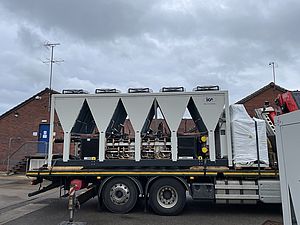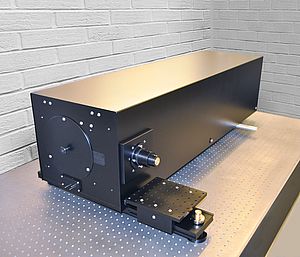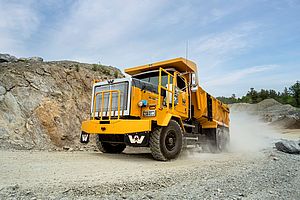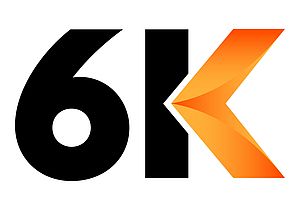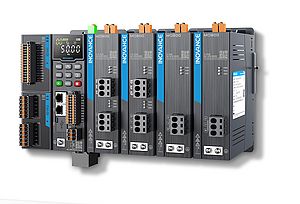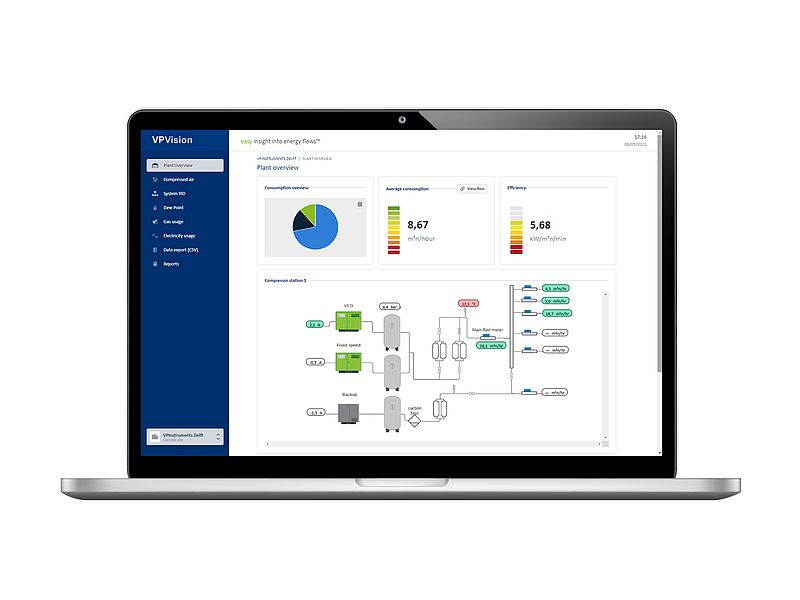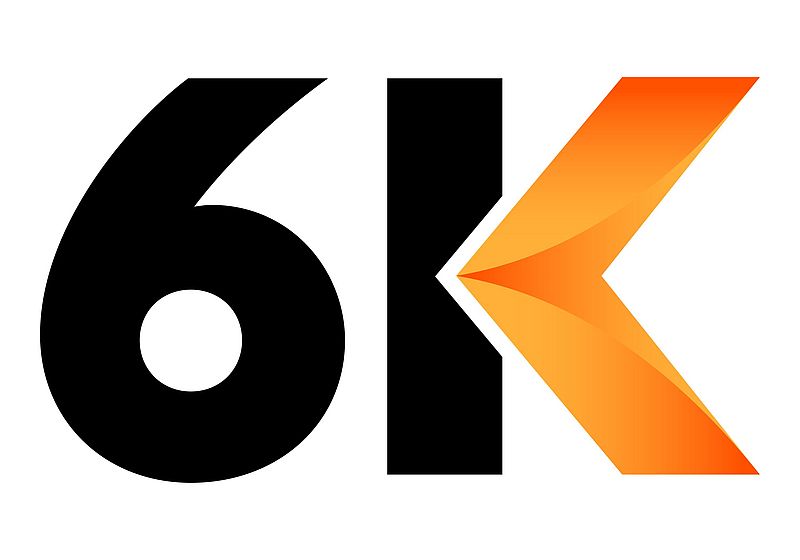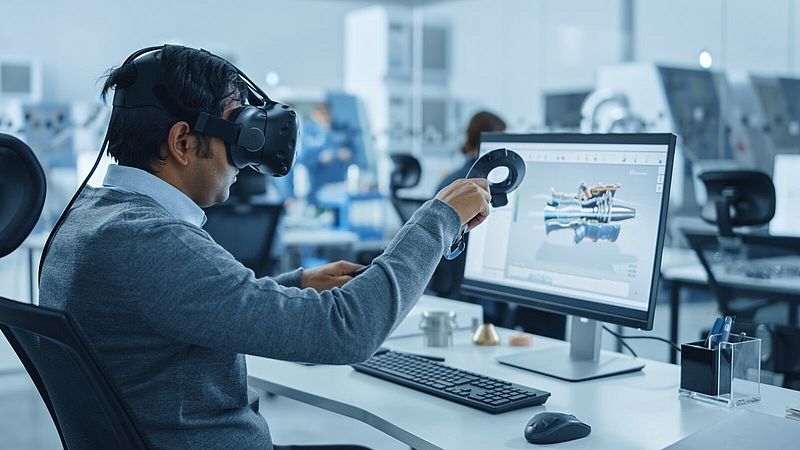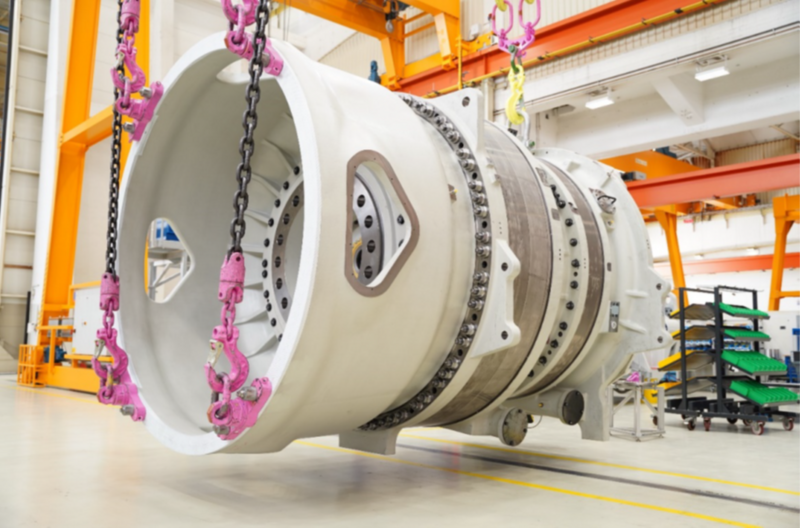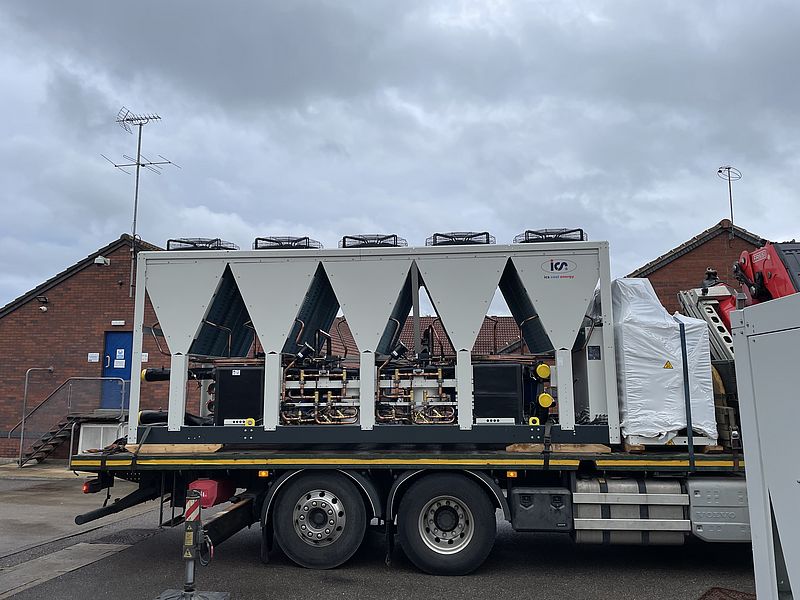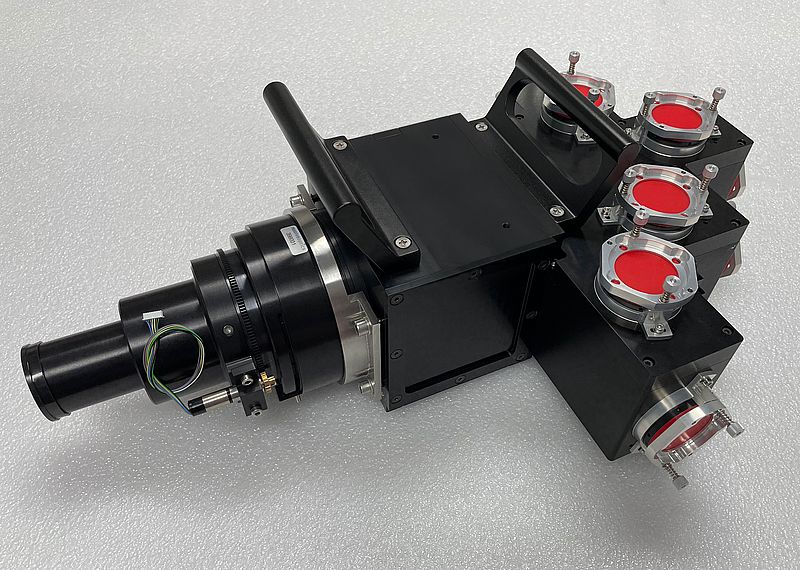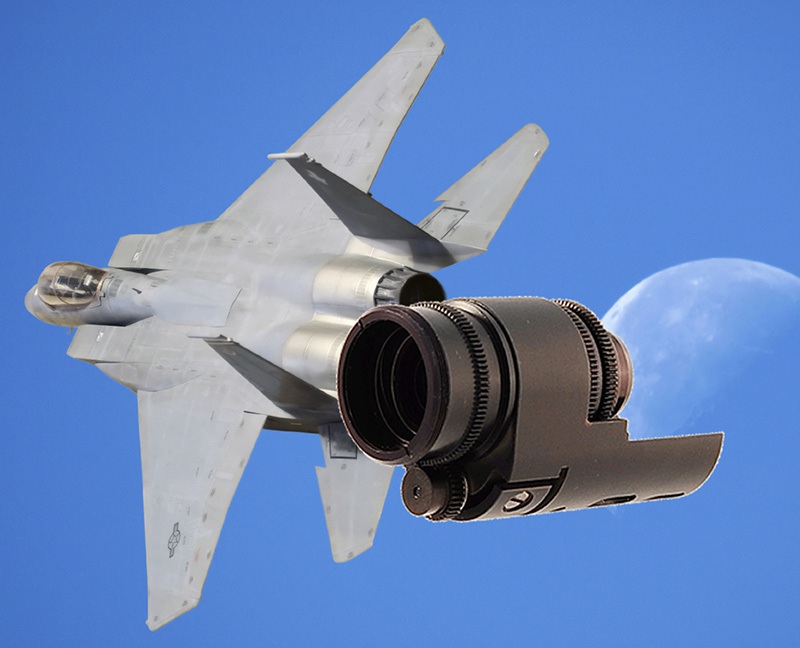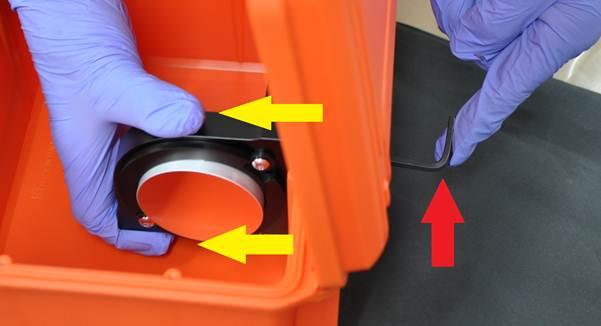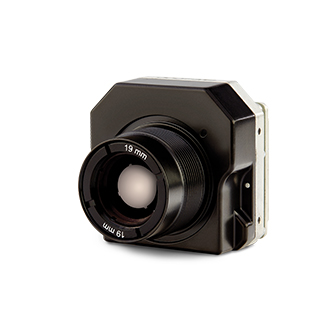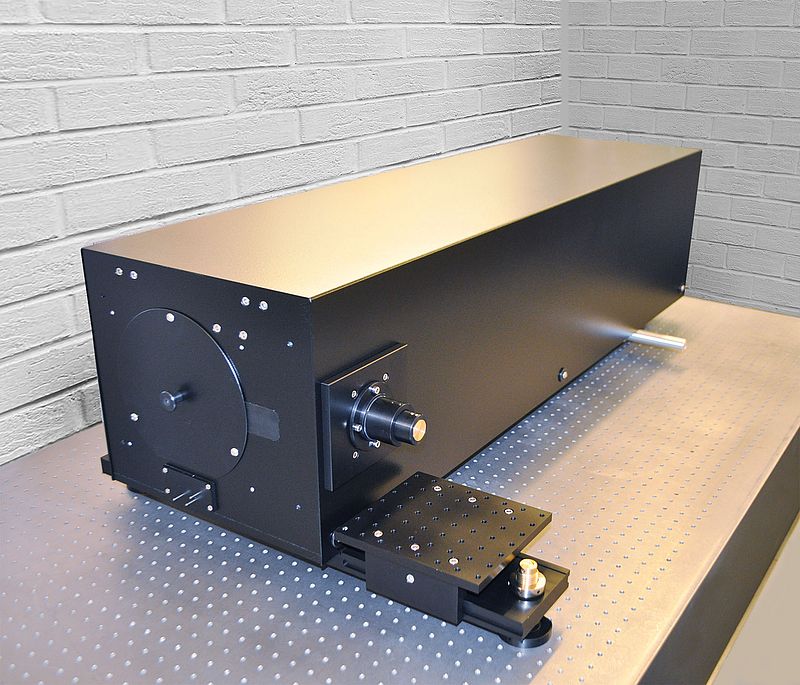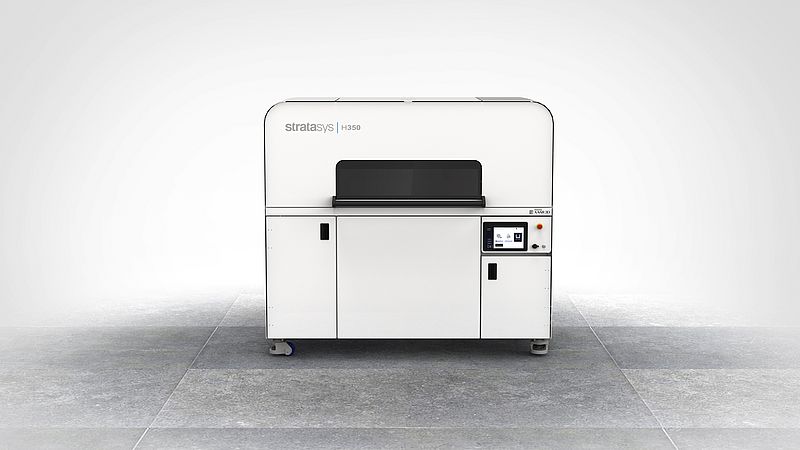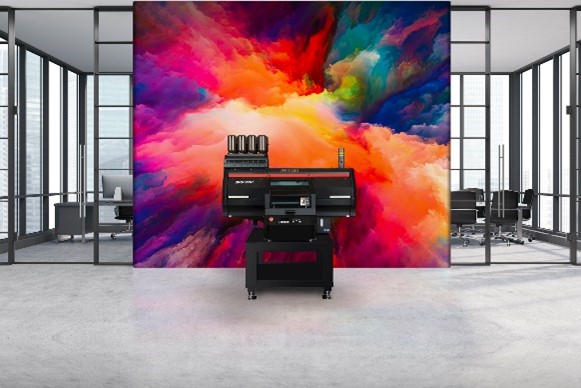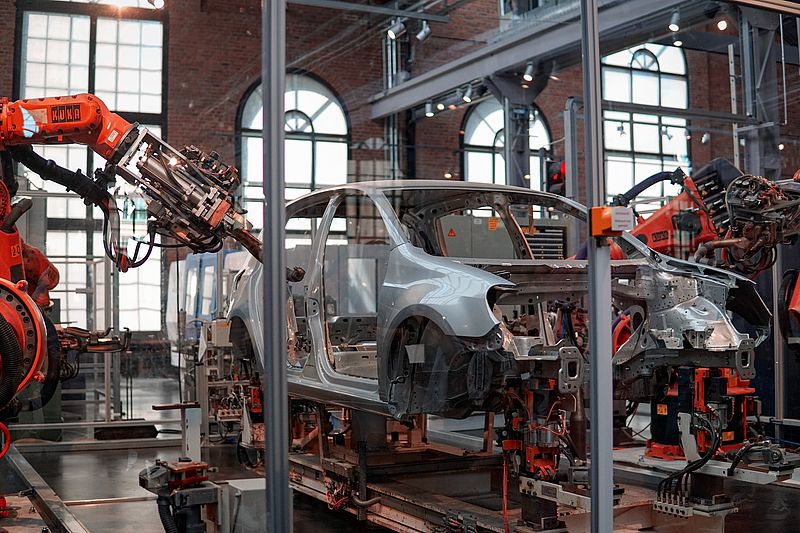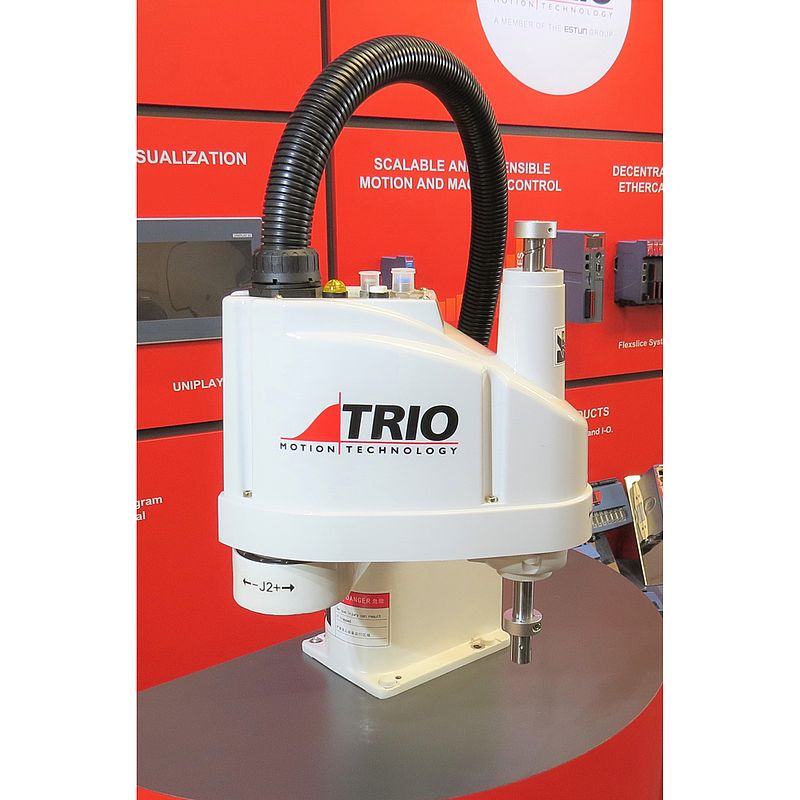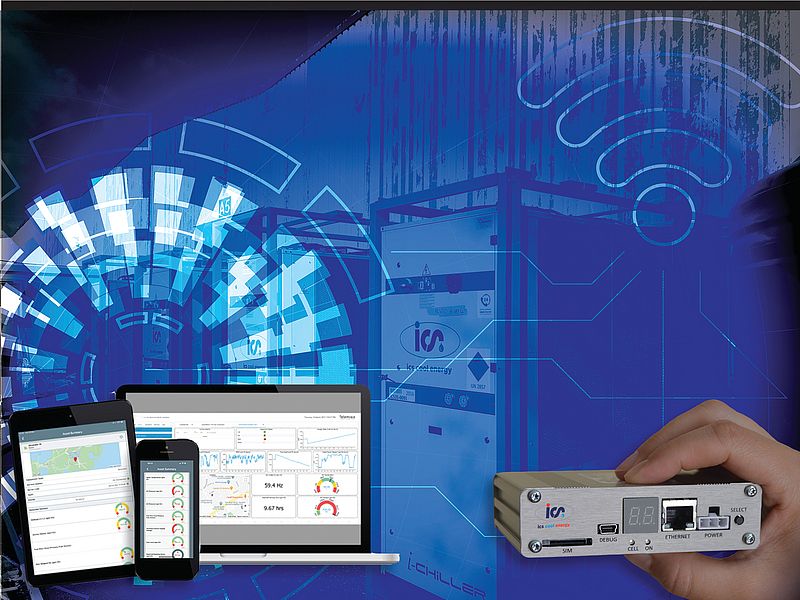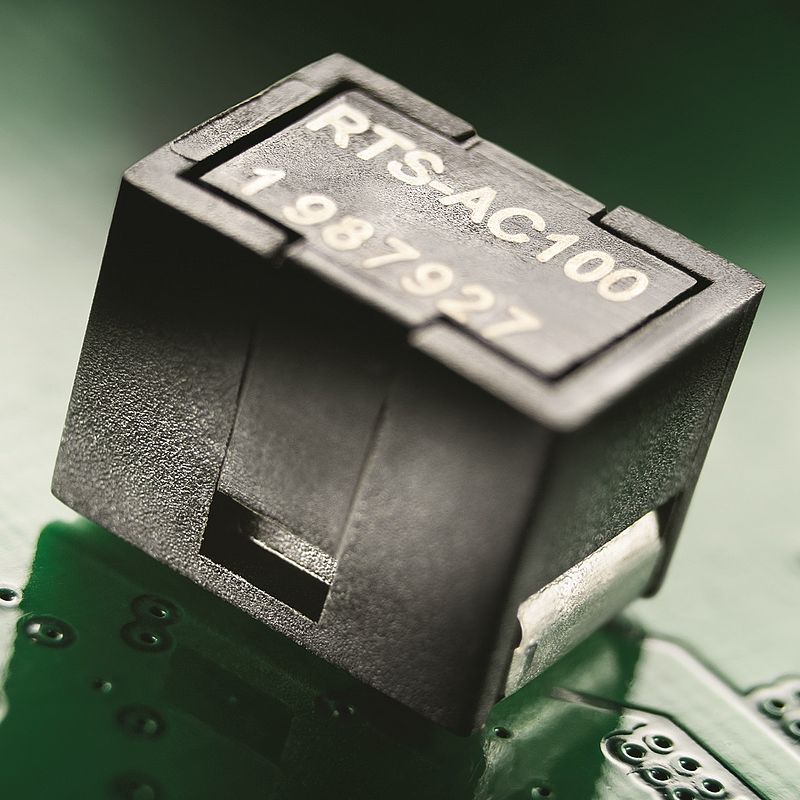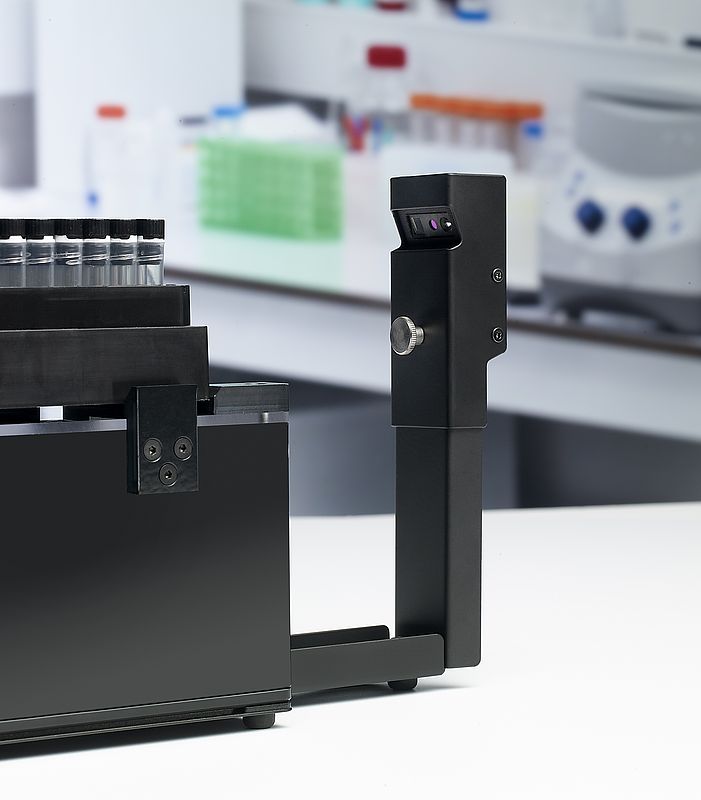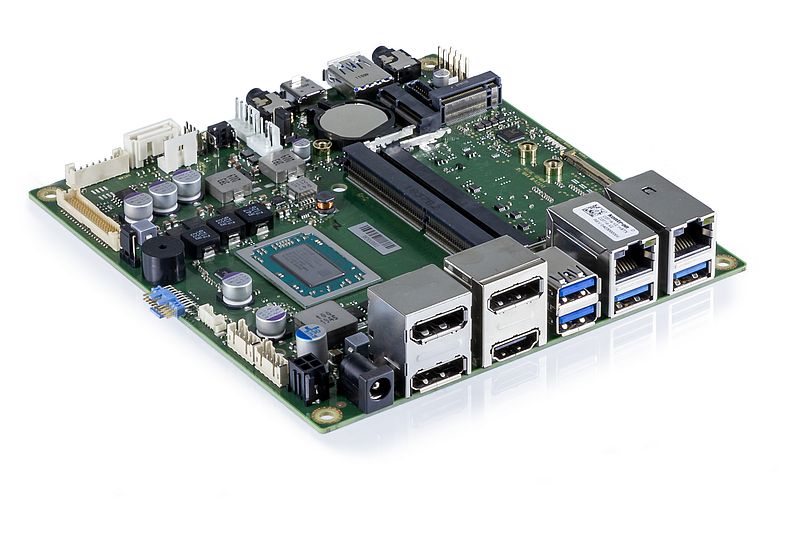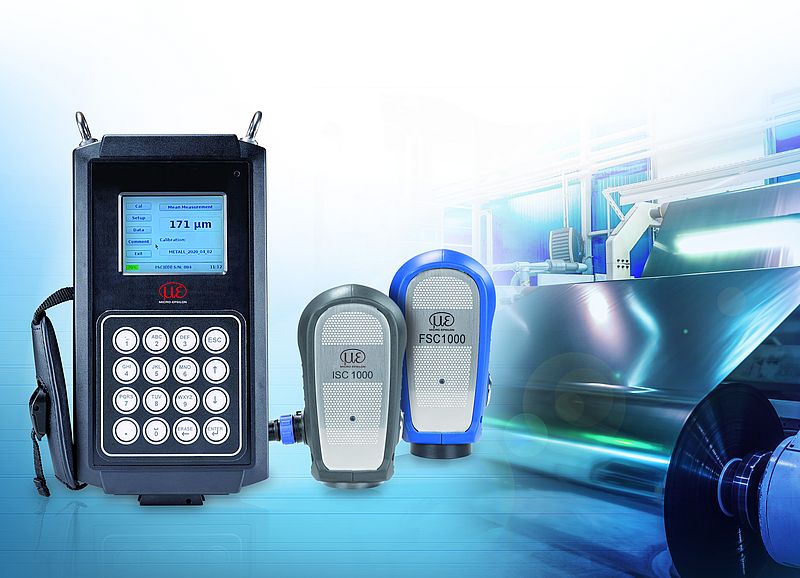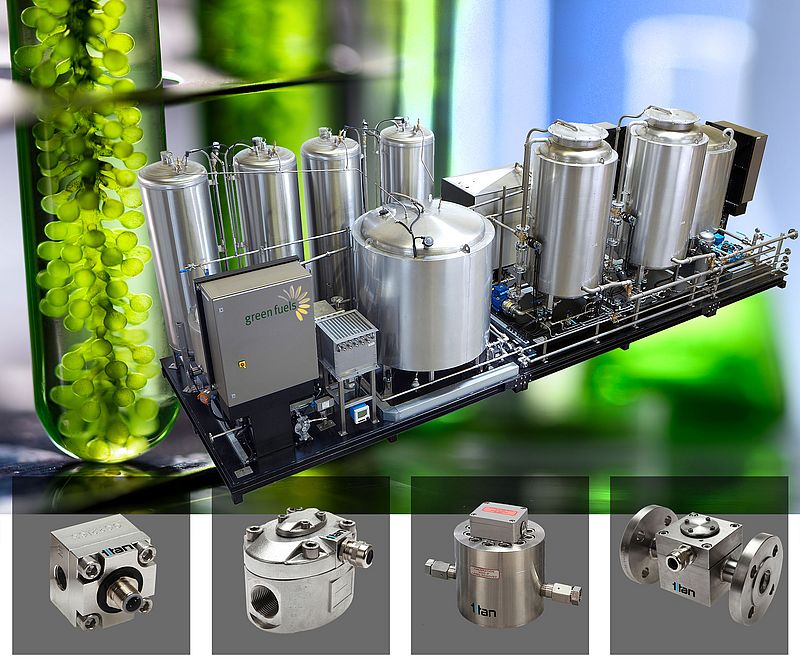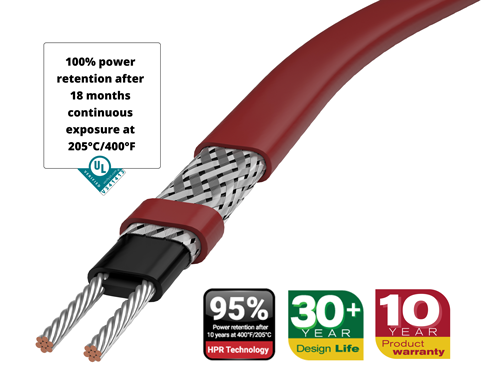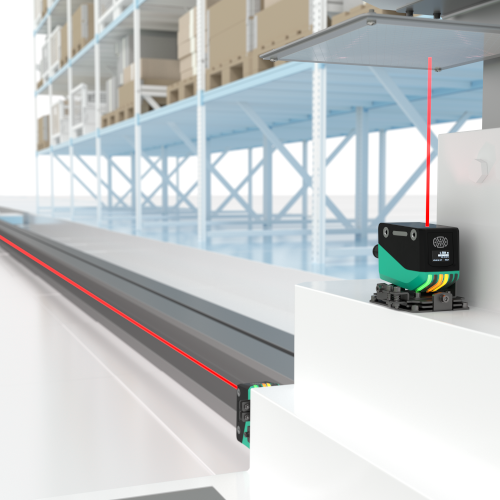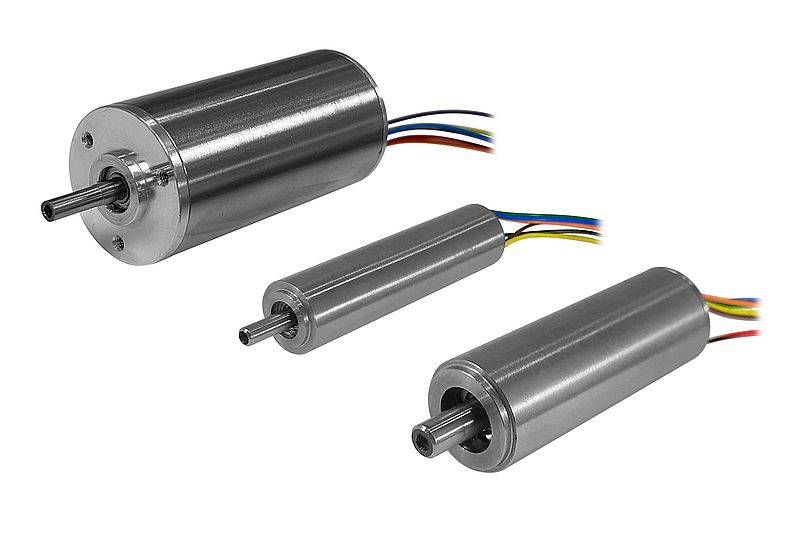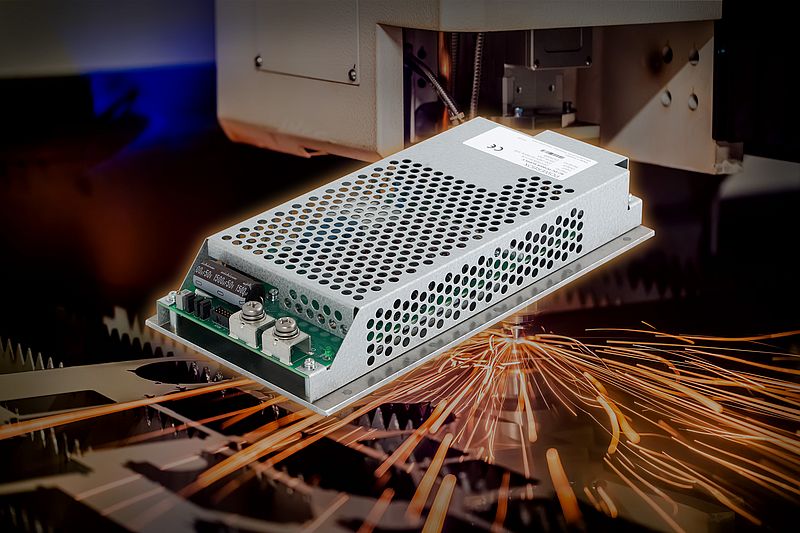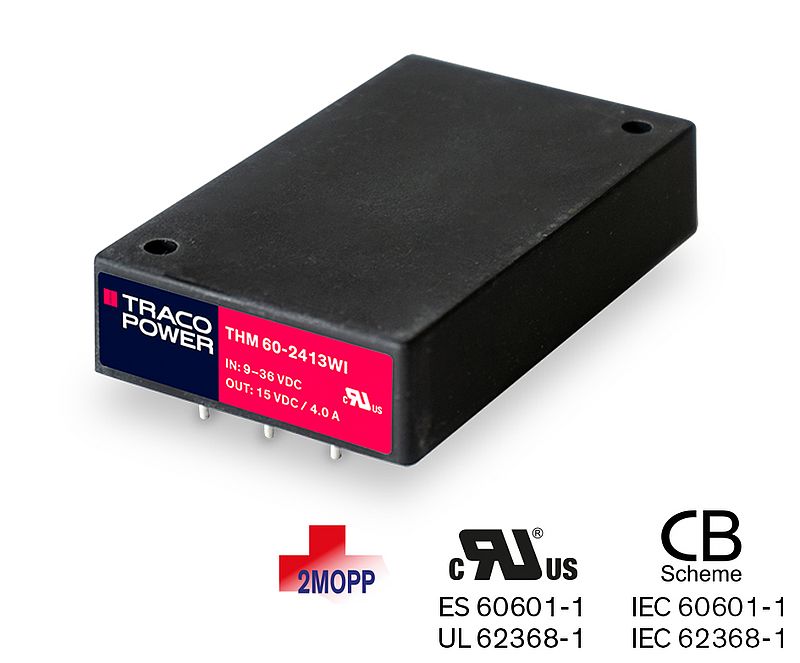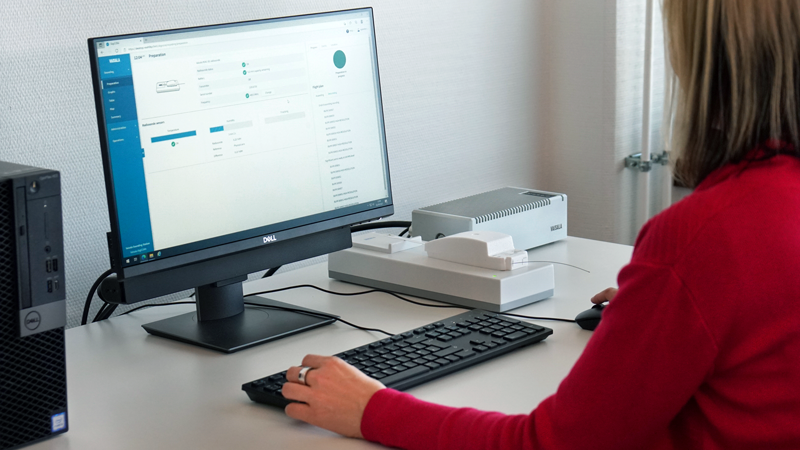Datasheets
Fluke Helps TenneT Solve Communication Turbulence at Rotterdam The Hague Airport
4:1 Input Voltage 60 W DC/DC Converter
Edge AI Systems Powered by the NVIDIA Jetson Family
RTS Thermal Fuse with Low Tripping Temperature of >175°C
Compact AC Multidrive Answers Call of European OEMs to Slash Cabinet Sizes & Installation Costs
Quick access
News - VP Vision Energy Management System Release 72 Industry News3 Industry News4 Industry News5 Industry News6 Fandis DC Roof Exhaust Units7 Vision & Identification - Beam Splitter & HD Lens8 Vision & Identification - Off-axis Parabolic Mirrors & LWIR thermal Imaging9 Vision & Identification - Communication Turbulence at Rotterdam The Hague Airport10 Vision & Identification - CMOS Camera & Reflective Beam Collimator11 Webinar - Intel12 Industry 4.0 - Print Software, Digital Performance & 3D Printing Solution13 Industry 4.0 - Manufacturing Innovation with the Virtual Twin Experience14 Industry 4.0 - Security Concerns in Digitalization15 Energy Efficiency - New and Sustainable Technologies in Mining16 Product Focus - New SCARA Robot Range17 A Manufaturer's Checklist for 202218 Product News20 Product News21 Product News22 Product News23 Product News24 Index25 Contacts26Companies in this issue
Allied Motion The Netherlands23 Micro-Epsilon Messtechnik GmbH & Co.KG21 SCHURTER AG4 Traco Electronic AG24 VPInstruments26K Inc.3 ABB Ltd4 ABB Process Automation16 Advantech Co.Ltd.20 Allied Motion The Netherlands23 Fluke Europe B.V.10 Kontron Europe GmbH21 Micro-Epsilon Messtechnik GmbH & Co.KG21 NVent22 Optical Surfaces Ltd11 Pepperl + Fuchs SE23 Powerbox International AB24 Ptc13 Resolve Optics Ltd8 SCHURTER AG4
Real-time Energy Management of Factory Utilities
In this newest release called release 7, the VPVision software has gotten a complete make-over. The modern design offers better navigation, improved stability, and increased performance.
Energy Efficiency, Vision & Identification
VPInstruments introduced release 7 of the VPVision energy management system. VPVision is a complete real-time energy monitoring solution for all utilities within the company. As real-time energy monitoring is key to energy savings, VPVision stands as a guiding hand to target energy savings and to improve the factory performance.
In this newest release 7, the software appears more intuitive and self-explanatory, making a user manual almost redundant. Release 7 features many upgrades, including:
- Save time by remote access. VPVision is now cloud enabled. So, prevent costly on-site visits and perform remote audits and system checks. Furthermore, updating is just a matter of minutes, as updates can be done automatically over the air.
- Quick navigation with linked widgets. No need to build complex dashboard and prevent a dataoverload. With the new linked widgets functionality, you can keep dashboard clean and simple for daily use, whereby more details can be accessed via the widgets.
- The right dashboard for the right job. Each factory, and each compressed air system is different. VPVision’s improved page builder makes it even easier to create custom pages with the right KPI’s / graphs / overviews / alarms and more. This combined with user profiles, ensures you can build the right dashboards for the right job.
About VPVision
VPVision is designed to get real-time data on usage and see the patterns on supply and demand side, to help users take factual and well-founded decisions on costs and investments.
It reveals the true costs of all utilities, including compressed air, technical gases, steam, vacuum, natural gas, electricity, wastewater, heating fuels etc. VPVision enables to view data on any platform, from PC to smartphone. It is a tool that help quantify energy savings activities, reduce leaks and optimize maintenance, monitor and optimize control systems, size and select the right equipment, detect issues immediately with alarm and email messages, and allocate costs towards your machines/ production lines / departments.
Nuclear MEP Club Launched in the European Parliament
The group aims to facilitate a cross-party discussion at European level on the future of nuclear as a decarbonized, cost-effective and reliable energy source.
On November 25, a parliamentary network on the future of nuclear power in Europe was launched at the initiative of MEP Christophe Grudler (Renew Europe) and with the cooperation of MEPs Tsvetelina Penkova (Bulgaria, S&D), Tomas Tobé (Sweden, EPP), François-Xavier Bellamy (France, EPP), Karin Karlsbro (Sweden, Renew Europe) and Alexandr Vondra (Czech Republic, ECR).
"In view of the ambitious European objectives in the fight against climate change, we must put all possible solutions on the table. The development of renewable energies must go hand in hand with nuclear innovations. It will not be possible to achieve the objectives of the European Green Deal without a share of nuclear in the overall energy mix. Therefore, our club was created specifically to find concrete political solutions in this sense.
The inclusion of nuclear in the European taxonomy, the production of carbon-free hydrogen, and research and innovation to reduce nuclear waste as top three priorities
The group aims to facilitate a cross-party discussion at European level on the future of nuclear as a decarbonised, cost-effective and reliable energy source. Regular meetings and events will be organised to address issues, with three priorities: the inclusion of nuclear in the European taxonomy, the production of carbon-free hydrogen, and research and innovation to reduce nuclear waste.
Governance has already been established, with MEP Christophe Grudler as Chair of the network, and MEP François-Xavier Bellamy (EPP), MEP Tomas Tobé (EPP), MEP Tsvetelina Penkova (S&D), MEP Karin Karlsbro (Renew Europe) and MEP Alexandr Vondra (ECR) as Vice-Chairs.
One of the first activities of the club will be a parliamentary mission at the Nuclear World Exhibition at Villepinte (Paris), and will be a first opportunity to gather the members of this new network on December 1st.
6K Additive and Freemelt Establish Strategic Partnership to Develop Refractory Metal Powder for the Freemelt 3D Printer Platform
New material options for advanced aerospace, hypersonic and medical applications that require high-performing material properties
Automation, Industrial Equipment & Supplies
6K Additive, a division of 6K, and Freemelt a high-tech growth company whose open-source 3D printing platform creates new conditions for rapid growth in 3D printing, jointly announced a strategic partnership to develop and bring to market new materials for their Electron Beam Powder Bed Fusion (E-PBF) printer platform. E-PBF printer platform enables advanced additive manufacturing applications. Cutting edge applications for hypersonics, as an example, require performance refractory materials such as tungsten to withstand the extreme temperatures, forces due to speed, shifting directions and altitude dynamics. 6K Additive offer refractory performance powders and the Freemelt additive manufacturing printers provide a printing platform to deliver on customers stringent requirements for these materials.
“Since the commercial launch of refractory metal powder we’ve seen a ton of interest in refractories specifically tungsten”
“Freemelt is an organization that prides itself on working with the market for parameter development on their platform to help customers push the capabilities of 3D printing for applications that require high-performance parts and materials like tungsten.” said Frank Roberts, president of 6K Additive.
Dr. Ulric Ljungblad, CEO of Freemelt added, “The market is consistently asking us for performance materials and partnering with 6K Additive gives us and our customers a material supplier that not only delivers high-quality metal powder but is quickly commercializing the sought-after performance materials like tungsten and other refractory metals. The new partnership helps us and them push the limits of what’s possible with 3D printing.”
In 2020 6K Additive completed the construction of a 45,000 sq/ft powder production facility in Burgettstown, PA. The facility has two UniMelt microwave plasma systems commissioned with two additional systems scheduled to be completed by years end. The company will also begin construction to expand the powder manufacturing building to add space for six additional systems. Installation of the additional systems will begin in Q1 of 2022.
Freemelt continues to advance the Freemelt One platform and has recently announced global expansion plans with German market subsidiary and new customers such as the KTH Royal Institute of Technology in Sweden and the Polytechnic University of Turin in Italy. Freemelt will be at the upcoming Formnext show in Frankfurt, Germany Hall 12.0 in booth 138. 6K Additive’s tungsten powder and Freemelt printed parts as well as a Freemelt ONE system will be on display during the show in the Freemelt stand.
Schurter Electronics Have a New Domicile in China
This short story highlights the challenges happening when the existing industrial park in which your own factory is located suddenly has to make way for state housing construction
Electronics & Electricity
Aaron Zhang, Managing Director of SCHURTER Electronics (China) Ltd. was faced with exactly this problem in April this year. His factory in GuangMing (Shenzhen) had to move. As quickly as possible.
40 objects inspected
Aaron Zhang immediately set out to find a new suitable location. He visited more than 40 properties within a very short time. After about 2.5 months, the time had come. In BaoAn, the westernmost district of the Shenzhen Special Administrative Region in Guangdong Province, he found what he was looking for: two floors in a modern industrial park with a total of 5,538 m2. It was a perfect fit! Just a few days later, the rental contract was signed.
Layout and labelling
SCHURTER Electronics (China) produces input systems with resistive and PCAP touch technology, as well as EMC filters. A well-considered layout of such a production facility has an enormous influence on the process and ultimately the product quality. Efficient room layout and placement of the individual production lines were sketched out with thought and care. The same applied to the labelling, lighting both inside and out.
Less than 2 weeks
By the end of September, all the preliminary work had been done. Aaron Zhang and his staff were able to start the move. It took less than two weeks until production could be resumed at the new location on 8 October 2021. All employees worked hard during the entire factory move, even working overtime on holidays. A Herculean achievement! Made in China.
The new address:
SCHURTER Electronics ShenZhen Ltd.
Floor 4th/5th, Building No.1, JiaDa Industrial Park,
HongHu East Road, YanChuan Community, YanLuo Street,
BaoAn District ShenZhen City, P.R.C.
Postal Code: 518105
Modernization of Steel Rolling Mill in Spain and Augmented Reality Deployed for Remote Testing
ABB is providing a package of metals industry-specific digital-ready solutions, including drives, controller and converter infrastructure, to enable Global Steel Wire (GSW) to modernize operations at its Santander steel mill.
Automation, Electronics & Electricity, Industrial Equipment & Supplies
GSW, part of the CELSA group, manufactures and brings to market a range of steel products, including wire rod, cables and ropes. Its high-quality steel cables are used extensively in the automotive industry as well as in mattress springs. The steelmaker had been exploring the use of digital technologies to optimize its rolling wire production and will now benefit from the expertise and metals industry domain knowledge of ABB.
As part of the contract, ABB will provide its medium voltage drives for high power applications, MEGADRIVE-LCI, together with AC 800PEC controllers. MEGADRIVE-LCI is an advanced type of converter that enables variable speed control and soft starting of large synchronous machines for many industrial applications. The technology will deliver reliability using a fuseless drive design and robust thyristor components, which enable fast and successful start-up. The demand-based medium voltage drives will result in optimized power consumption and higher process efficiency.
Teams from the two companies had the chance to incorporate the use of augmented reality (AR) during the Factory Acceptance Test (FAT), with representatives at the LCI factory in Switzerland collaborating with others in Spain. It encompassed audio, video, document-sharing and live annotations. This allowed progress to continue during the COVID-19 travel limitations.
The use of ABB technology will allow GSW to save energy and reduce its carbon emissions through increased efficiencies
“The modernization and upgrades project at our Santander mill is well underway and ABB shares our vision for smart, efficient operations – this approach was demonstrated once again in the flexibility around the remote FAT, which we can describe as 100 percent successful,” said Iago López García, Rolling Mill Electrical Maintenance Manager, Global Steel Wire. “We look forward to the completion of this phase of activity and ongoing mill operations.”
“We have a long-established relationship with GSW and CELSA Group and won this order after an in-depth study that was carried out last year,” said Enric Giner, Local Division Manager, Process Automation, ABB in Spain. “GSW selected ABB for this upgrade because of our deep knowledge of the metals industry, our approach to digital-ready solutions, and our excellent customer service, bolstered by our regional and global footprint. ABB is also providing technical support to GSW after the start-up, expanding on the existing contract.”
“The pioneering project with GSW demonstrates the importance of the data travelling instead of the person, an invaluable commodity during the pandemic,” said Iván Vicente, Service Operations Manager, Process Automation, ABB in Spain. “However, we should also note that what differentiates our company is bringing people and technology closer together to produce great results.”
The use of proven ABB technology will allow GSW to save energy and reduce its carbon emissions through increased efficiencies. The drives voltage scalability minimizes harmonic influence on the supply system and a converter efficiency of more than 99 percent will ensure that the system works for many years. Additionally, the AC 800PEC controller for regulation management is one of the fastest on the market.
The LCI technology is digital-ready and allows all types of connection and remote optimization: software updates, readjustments when there are changes in the process, visualization and analysis of the system.
Flender Has Passed the Mark of 200 Gigawatts of Gear Unit Power Delivered for Wind Turbines
In 2021 around 743 gigawatts of wind turbine capacity has been in operation worldwide. Flender's Winergy holds a share of around 30% in gearboxes within these turbines.
Energy Efficiency
The drive manufacturer Flender has crossed the 200 GW milestone of gearbox capacity for delivered wind turbines with its Winergy product brand. According to the Global Wind Energy Council (GWEC), in 2021 around 743 gigawatts of wind turbine capacity has been in operation worldwide. Winergy holds a share of around 30% in gearboxes within these turbines. Consequently, over 150 million households can be supplied reliably with electricity from renewable sources.
"We look with pride at reaching 200 GW. It reflects the great trust our customers have in our products. As a trusted partner at their side, we are working with our customers to create a sustainable future. Power generation from renewable energies plays an important role in this," says Andreas Evertz, CEO of the Flender Group.
With its Winergy brand, the company has set several trends that are now standard for wind turbines
"Our global Wind team is doing an outstanding job. We are doing everything we can to drive innovation in the development of gearboxes, generators and couplings and shape the future of power generation together with our customers," said Aarnout Kant, President Wind Gears at Flender.
Flender has helped shape the wind energy industry since its early days. With its Winergy brand, the company has set several trends that are now standard for wind turbines. In 2014, Flender already exceeded the milestone of 100 GW of delivered gearbox power. Through the development of powerful and compact drive systems, this mark has now been doubled, mere seven years later.
Compact AC Multidrive Answers Call of European OEMs to Slash Cabinet Sizes & Installation Costs
The MD800 from Inovance Technologies has been released as a cost-effective AC multidrive including STO and ability to control PM & induction motors from a single software package.
Automation, Motors & Drives
Industrial automation group Inovance Technology Europe has announced the release of the MD800 – an AC multidrive designed to meet the needs of European OEMs for more flexible and scalable multidrive performance in an ever more compact footprint.
MD800’s modular design enables up to 8 drives to be supplied from one rack with a single rectifier, sharing energy through the common DC bus. The product provides comprehensive functionality including an individual STO (safe torque off) on each drive, the ability to control PM and induction motors from a single software package, a +24 VDC control backup supply, and a full range of fieldbus and I/O expansion option cards.
Meanwhile, the dual rating of each drive module allows heavy duty 150% overload for demanding torque applications or normal duty 110% overload for fan & pump applications.
"Product managers, application engineers, and R&D engineers market research has ensured that the MD800 will meet and exceed the demands of all multidrive manufacturing machines in Europe"
Additionally, MD800 is highly cost-effective and also offers a significantly reduced total cost of ownership. Installation costs in particular are slashed as a result of user-friendly pluggable, spring type connectors, and a faster build time due to reduced wiring and fewer external components. The product is also designed to operate in the harshest of industrial environments with 3C3 and 3S2 conformal coating, an operating temperature range of -20 to +60oC, an operating altitude of up to 4,000 metres, and a separate cooling channel for the heatsink.
David Bedford, Inovance’s European strategic marketing manager for AC drives, comments: “Our product managers, application engineers, and R&D engineers in Spain, France, Germany, Italy, and Turkey work extensively with local OEMs, systems integrators, and distributors. Their market research has ensured that the MD800 will meet and exceed the demands of all multidrive manufacturing machines in Europe – from the simplest of conveyors to the most complex printing machinery. We think that MD800 is the most compact and flexible multidrive on the market today, and we also think it’s the most cost-effective AC multidrive available in Europe."
Major Hospital in East England Lowers Carbon Footprint with Heating and Cooling Systems
Complex heating and cooling system with ICS Cool Energy’s i-FH heating system, multipipe chillers and industrial free cooling already reduces the hospital’s emissions by over 95 tonnes of CO2 per year
Energy Efficiency, Industrial Equipment & Supplies
ICS Cool Energy announced the successful delivery of new heating and cooling systems at one of UK’s major hospitals located in eastern England. The project, triggered by the hospital’s decarbonization initiatives already saves over 95 tonnes of CO2 emissions thanks to the ICS Cool Energy’s free cooling installed to cool the MRI scanners. As the next step, the hospital will install Industrial Free Heating (i-FH) system and multipipe chillers to replace the boiler-based heating installation and further reduce hospital’s carbon emissions.
Decarbonization of Cooling
In the first phase of the project, the hospital was looking for ways to minimize their environmental impact by reducing the carbon footprint of their existing cooling system, used to cool high cooling load areas without hampering their critical infrastructure. To find the right cooling technology, the hospital managers focused on energy efficiency and sustainability, and reached out to ICS Cool Energy for recommendation. Following the analysis of the existing system, ICS Cool Energy’s engineering team recommended maintaining the chillers already in place and expanding the system with six new free coolers, from the ICS Cool Energy’s IFC (Industrial Free Cooling) range.
Adding remote IFC free coolers, showed better results when compared to installing new chillers with a built-in free cooling coil. ICS Cool Energy remote free coolers, designed to cool process water using the ambient air and working in series with the existing chillers, offer a larger surface area and a reliable way to offload chillers for up to 70-90% of the year.
“In the UK, the relatively cool climate and ambient temperatures allow for partial or full free cooling for much of the year, depending on the set point. This means that with the installation of the free coolers within the existing cooling system, the hospital can achieve substantial energy savings on their electricity, particularly between the months of October and April. We have estimated that thanks to the installation of the free coolers alone, the hospital will reduce their carbon emissions by over 95 tonnes of CO2 per year,” said Philip Ayres, Senior Sales Engineer at ICS Cool Energy.
Decarbonization through Electrification of Heating
For the hospital, maintaining the right temperature, humidity, and air quality is essential to ensure comfortable and healthy conditions for patient’s care and staff’s comfort all day and night. Sanitary hot water is just as vital for cleaning and hygiene in a hospital environment. As the heating system at the hospital was based on aging gas boilers, the management decided to look at options to make them redundant and replace them with a more environmentally friendly and energy efficient solution.
“Over the last few years, innovations in cooling and heating systems have led to innovative designs that can offer significant environmental and energy benefits, compared to the systems that they are designed to replace,” said Philip Ayres. “There is energy that is lost in most buildings because of heat produced by chillers used for cooling. Our i-FH industrial free heating systems can recover, harness, and use this heat elsewhere. As low carbon emissions, energy efficiency and reliability of the system were the parameters that mattered most for the hospital, this was the solution that fit their needs perfectly.”
As a result, the hospital decided to replace their existing gas boiler plant and electrify their heating system by adding a cascade system featuring i-FH free heating and a multipipe unit from ICS Cool Energy to their existing installation.
“i-FH and multipipe units are an example of product development that can create a sustainable heating sector, contribute to mitigating climate change and reducing buildings’ and processes’ carbon footprint. The fully electric driven multipipe unit doesn’t generate any direct greenhouse gas emissions and offers up to overt three times higher efficiency compared to most gas boilers when delivering hot water for heating systems.”
The multipipe units will recover energy by shifting use from a separate boiler and chiller to one single, simplified multipipe unit that simultaneously delivers hot and chilled water. This system uses renewable and recovered energy for the production of hot water and can replace the existing fossil-fuel boiler and chiller system to deliver both cooling and heating for the building with no direct greenhouse gas emissions.
In case additional cooling or heating capacity would be needed, or to maintain the process in case of any failure with the other part of the system, the hospital decided to modify the existing chiller set up keep and boilers as backup.
Cirdan Launches “Photonics” Certificate, Facilitating Investment into the World’s First Photonics Index
The Solactive EPIC Core Photonics Certificate will be listed on the Frankfurt Stock Exchange for retail and institutional investors with the ISIN Code XS2412871902 and an initial value of €1,000 per Certificate.
Energy Efficiency
The European Photonics Industry Consortium (EPIC) announced that Cirdan Capital Management, with collaboration from C8 Technologies, has launched a Certificate based on the Solactive EPIC Core Photonics Index. Investment in the Certificates is targeted to be ready with brokers on or about 23 December 2021. In addition, the Index will be available on the C8 Technologies platform for Direct Indexing.
With so much of the focus on COP26 around new technologies, photonics is an important technology that will ensure a significant reduction in energy consumption because it utilises light and not electronics. Photonics will deliver more efficient manufacturing at a significantly lower cost and with a much lower impact to the environment.
Photonics leads the evolution from using electrons to using photons (light) which are faster, lighter and more precise
The Solactive EPIC Core Photonics Index is the first of its kind to represent a global cross-section of the world’s largest and most liquid public photonics manufacturing companies and includes all companies with at least 50% of their revenues sourced from photonics manufacturing activities. This means that for the first time, investors will be able to specifically target their investments to the photonics industry.
“Photonics is a major enabler of a cleaner environment across myriad industries,” said EPIC CEO Carlos Lee. “The future of our planet depends on creating greener solutions to traditional manufacturing processes and photonics technologies facilitate this evolution across numerous industries. We may not know what the future looks like, but we are certain that photonics technologies will take us there!”
Without photonics, it would not be possible to have laser eye surgery or stream Netflix or use a Smartphone
Photonics is currently used across a wide range of applications, from medicine to manufacturing to safety to entertainment. But it also has the capability to go so much further. Photonics is revolutionizing the semiconductor industry by integrating light into integrated circuits that will make the next generation of computers and other devices considerably more energy efficient while delivering a massive improvement in processing capacity, data throughput and speed.
Over the next five years, the photonics industry is expected to grow by more than 13% annually with a total market value in excess of US$1 trillion by 2026. Over the last six years, the back-tested Solactive EPIC Core Photonics Index outperformed MSCI World by 15% per year with a similar level of risk (volatility).
“While the investment returns on individual photonics companies are potentially very large, it is difficult for investors to differentiate between winners and losers over time.” explained Markus Barth, CEO of Anatase Ltd, who designed the Index in collaboration with EPIC and Solactive. “EPIC’s in-depth company analysis provides a diversified global basket of companies that are all key-enablers of a greener future.”
In addition, Barth noted, “The carbon footprint of photonics companies in the Index is, on average, 70% lower than well-known equity market benchmarks. This means they walk the walk in their own operations as well as facilitating energy and resource efficiencies for their customers.”
Following the launch, EPIC will be actively looking at how pension funds can avail themselves of this new, greener investment. Half of the Certificate revenues will be reinvested into promoting photonics globally.
About the European Photonic Industry Consortium
EPIC is the world-leading industry association that promotes the sustainable development of organizations working in the field of photonics in Europe, representing over 750 companies. EPIC fosters a vibrant photonics ecosystem by maintaining a strong network and acting as a catalyst and facilitator for technological and commercial advancement. EPIC publishes market and technology reports, organizes technical workshops and B2B roundtables, supports EU funding proposals, advocacy and lobbying, education and training activities, standards and roadmaps, pavilions at exhibitions.
Large Format Optical Module for High-speed Imaging
Resolve Optics designed and supplied new 8-channel and 16-channel beam splitter optical modules to Specialised Imaging (Pitstone, UK) for the next generation of their SIM multi-channel framing camera.
Vision & Identification
The SIM family of ultra-high-speed cameras are used in leading research laboratories around the world. Capable of capturing up to 32 images at 1 billion frames per second, they are proven to be able to capture visual data from even the most fleeting of phenomena.
Wai Chan, Managing Director of Specialised Imaging commented: “We were looking to upgrade the design of our SIM multi-channel framing camera to meet the expected higher performance demands from our customers in the next couple of years. As a part of this review, we decided a new multi-channel beam splitter optical module that could deliver better performance than the current model was a key factor. To meet the design goals for our new SIM camera we specified that the beam splitter optical module should be compact, with a system aperture of f2.8 giving us up to 16 channels with a 17mm viewport on each channel."
The new beam splitter optical module is be able to incorporate high quality, user changeable filters that would allow Specialised Imaging next generation SIM cameras to satisfy the expanding market demand for high-speed hyperspectral imaging
Wai Chan continued: "Added to this already challenging design specification we stated that the new beam splitter optical module should also be able to incorporate high quality, user changeable filters that would allow our next generation SIM cameras to satisfy the expanding market demand for high-speed hyperspectral imaging. Having worked with Resolve Optics previously on design and development of key optics for our camera systems we again turned to them for this demanding project. I am very pleased to say that the Resolve Optics team has risen to the challenge and designed a beam splitter optical module that meets all of our specifications”.
Rugged and Compact HD Lens for Aviation Applications
Optimized for use in H-head-up D-display (HUD) systems
Vision & Identification
Lenses for today’s HUD system are more likely to be used to capture images of the pilots view out of the cockpit with the symbology over laid on the final image as opposed to the lens looking through the combiner and capturing the symbology at the same time as the pilot’s view. No matter which technology is used there is still the issue of each aircraft type needing a different field of view (FOV). This has traditionally required a different optical lens design for each aircraft type which can be costly both in terms of optical design costs and qualification of each lens/camera system.
No matter what aircraft needs a HUD system for, the lens will be optimized and can accommodate the correct FOV
Resolve Optics has taken the approach of designing a small compact zoom design that covers the majority of the aircraft that require HUD system recording. The zoom design can be used to set the lens at a desired FOV and locked. This means no matter what aircraft you need a HUD system for you will already have an optimized lens that can accommodate the correct FOV. Resolve Optics HD HUD lens has been designed and tested to withstand the high levels of vibration, shock typically found in aircraft.
Low Profile Mounted Off-Axis Parabolic Mirrors
Designed to facilitate rapid and simple mounting onto an optical table or other support
Vision & Identification
Optical Surfaces Ltd has launched a new low profile mounting system that offers a highly stable platform for smaller diameter (up to 75mm) parallel or wedge backed off-axis parabolic (OAP) mirrors. The OAP mirrors specialist is now able to supply smaller diameter OAP mirrors pre-aligned in the new high quality stress-free mount.
Unlike standard parabolic mirrors, off-axis parabolic mirrors direct and focus incident collimated light at a specific angle, allowing unrestricted access to the focal point as well as reducing the size and minimising the weight of an optical design
Optical Surfaces is able to routinely produce OAP mirrors with surface accuracy to lambda/20 (peak-to-valley) depending upon off-axis angles. Using proprietary polishing techniques the company can, depending on the surface accuracy required, achieve the natural limit to the off-axis angle of around 25-30 degrees and surface micro-roughness of less than 1 nm. A range of coatings is available for standard and custom components from metallic with or without protective overcoat to multilayer dielectrics and ultra-hard coatings.
High-performance LWIR Thermal Imaging
Equipped with a simple optical interface and common commercial interfaces, integration with the Tau 2 and new Tau 2+ from Teledyne FLIR is seamless.
Vision & Identification
The Tau 2 series comprises 40+ variants of the rugged longwave infrared (LWIR) thermal camera module. Teledyne FLIR has the user covered with high performance and reliable longwave infrared (LWIR) Tau 2 series thermal camera modules. Common interfaces and access to a US-based Technical Services team reduce development risk, development cost, and shorten the time to market. If the user is developing with Tau 2, Teledyne FLIR can help.
LWIR Thermal Camera Integration Made Easy
The Tau 2 and the increased sensitivity Tau 2+ are fitted for integration in demanding applications including UAVs, unmanned applications, handheld imagers, security cameras, maritime cameras, and thermal sights. Integration is seamless with common optical, mechanical, and electrical interfaces and the most lens options available on the market. the user can see what Tau 2 solution is best for the application.
Fluke Helps TenneT Solve Communication Turbulence at Rotterdam The Hague Airport
When TenneT had to investigate an issue at one of its substations that was causing significant air traffic communication problems, an innovative new detection tool held, the answer to a fast, safe, and effective response.
Sensor Technology, Vision & Identification
TenneT is a leading European electricity transmission system operator with its main activities in the Netherlands and Germany. With over 23,900 kilometres of high-voltage connections, TenneT ensures the secure supply of electricity to 42 million end-users.
TenneT’s core tasks following its appointment as grid operator under the Dutch 'Elektriciteitswet' (E-wet) and the German 'Energiewirtschaftsgesetz' (EnWG), are:
- To ensure a secure and continuous supply of electricity
- To provide transmission services by transporting electricity along the high-voltage grid from where it is produced to where it is consumed.
- To provide system services to guarantee the flow of electricity in the Netherlands and large parts of Germany.
- To support the large-scale transition to renewables.
Interference at Rotterdam The Hague Airport
Rotterdam The Hague Airport is a minor international airport serving Rotterdam, the Netherlands' second largest city and The Hague. It is located 3 NM north northwest of Rotterdam in South Holland and is the third busiest airport in the Netherlands. The airport handled more than two million passengers in 2019 and features scheduled flights to European destinations, including London.
In the latter part of 2020, the Dutch Radiocommunication Agency was contacted by Rotterdam The Hague Airport air traffic control. The airport reported strong radio interference between the pilots and air traffic control on all incoming flights from the UK – one of the airport’s busiest routes.
The interference meant that for a period of 10-20 seconds, no communication was possible between the pilot and air traffic control. And while this issue was not causing flights to be diverted or significant delays, the airport was keen to identify and fix the problem so trouble-free communication could resume.
Track and trace
In January 2021, the Dutch Radiocommunication Agency started a field investigation to identify the cause of the interference. This included direction finding vehicles ‘mapping’ the area to locate the interference location. The Dutch Radiocommunications Agency identified that the interference was coming from the substation, ‘De Lier 150’, one of the many substations in the country managed and maintained by TenneT.
TenneT immediately responded to the news by dispatching Roel Van Hees, an Operational Maintenance Engineer at TenneT. At the substation,Roel Van Hees undertook further investigations to identify the potential root-causes of the interference. Initial audible and visual inspections showed no abnormal findings.
Roel Van Hees then conducted a partial discharge inspection, using the Fluke™ ii910 Precision Acoustic Imager. The cause of the interference was instant.
Introducing the ii910
The Fluke™ ii910 Precision Acoustic Imager was developed to help engineers detect electrical discharge quickly and easily. The durable, handheld casing of the Fluke ii910 has a seven-inch LCD touchscreen which overlays a SoundMap™ on a visual image for rapid identification of discharge or leaks between frequencies of 2-100 kHZ. The array of integral microphones converts ultrasound signals into clear visual images on the backlit touchscreen. Captured data can be transferred via an integral USB-C socket directly to a PC. From here, the data can be uploaded to the Machine Learning PDQ Mode™ Reporting Platform. This will provide the most important partial discharge insights, including partial discharge type identification. The ii910 provides video recording of up to 5 minutes and has a battery life of at least 6 hours.
“The Fluke ii910 Precision Acoustic Imager proved invaluable in helping to quickly and easily identify the partial discharge issue,” says Roel Van Hees. “In the past, we would have had to listen and/or use an ultraviolet (UV) camera, which are slow and inefficient methods compared to the Fluke ii910. With its wide view, the Fluke ii910 enabled us to quickly scan the substation and identify the partial discharge places of concern.”
“The Fluke ii910 Precision Acoustic Imager was developed with the end-user in mind,” comments Tako Feron, Product Manager Acoustic Imaging at Fluke Corporation. “Roel Van Hees was part of a working group that helped to test and feedback on the product during its development. Their feedback was invaluable in helping us to address some of the pain points they face on a daily basis, and we continue to work with the group to add new features to the software.”
Corona discharge
The ii910 was able to identify partial discharges in a high frequency range. Further investigation by the operational maintenance engineer quickly identified that rail clamps were suffering from corona discharge. Corona discharge, one of the most common forms of partial discharge, is caused by the ionization of a fluid such as air surrounding a conductor carrying a high voltage.
After removing the upper part of the clamp, excessive corrosion was found. The end of the spring strip (to contact the rail tube) showed traces corresponding to damage from corona discharges. The degree and composition of the corrosion under the left spring strip suggested that the fastening material had decayed.
Over time, an accumulation of salt and dirt deposits had settled between the spring strip and rail tube. As no more voltage equalization could take place, a potential could arise between the spring strip and rail tube. The built-up potential was therefore equalized by means of partial discharges.
The discharges had increased in intensity over time and damaged the spring strip and rail tube, with the presence of several degraded rail terminals having a cumulative effect. This made it possible to build up an interference signal with sufficient energy and high frequency to disrupt radio communication of air traffic hundreds of meters away.
Fixing the problem
To fix the problem the upper clamping parts were sanded down, rotated 180 degrees, and reassembled. Following this, communication between the airport control tower and pilots is now back to normal.
However, it is plausible that partial discharges will occur again in the future. In the past, power grid operators were not overly concerned with corona discharge as it has a negligible impact on the grid network. Public complaints due to noise pollution was the main reason this issue had been previously addressed. Though, given the communications issue at Rotterdam The Hague Airport, the engineering team at TenneT is currently investigating a proactive maintenance plan to help mitigate the impact of future corona discharge throughout its network.
Concludes Roel Van Hees: “TenneT has been using Fluke instruments for a number of years and they play a key role in our day-to-day mission to provide a safe, secure and continuous supply of electricity to our end-users. The team believes in the quality associated with the Fluke brand, and at a personal level, I also use Fluke products at home.”
127 Megapixels CMOS Camera
Uses a global shutter at this very high resolution
Sensor Technology, Vision & Identification
In order to classify even the smallest object structures in the highest quality, the demands on industrial cameras in terms of resolution and image quality have been growing steadily for years. However, the high-resolution sensors available on the market all have only a rolling shutter, which is easier to manufacture. The new shr661 CMOS camera from SVS-Vistek can therefore confidently be called a milestone in machine vision, because it offers a huge resolution of 127 megapixels and still works with a global shutter. It thus expands the range of applications, especially in the field of moving objects.
In the case of sensors with rolling shutters, the sensor lines are exposed and read out one after the other, which in applications with moving objects can lead to a time-delayed exposure of the sensor lines and thus to distortions and pattern artifacts caused by illumination. Global shutter sensors, on the other hand, expose all pixels simultaneously, to put it simply, and then read them out. As technical as this sounds, the advantage in application is described easily: Moving objects are sharply imaged by the global shutter. For example, moving objects on an assembly line can be inspected down to the smallest detail even at this high resolution.
The "fat boy" in Machine Vision
SVS-Vistek's shr661 is based on the Sony IMX661 pregius sensor with a pixel size of 3.45 µm edge length. Thanks to its high resolution of 13392 x 9528 pixels and its global shutter, the shr661 can reproduce even the finest structures of moving objects and represents the current high-end of industrial cameras in terms of image quality.
The design of the new shr661 facilitates integration into industrial applications. Although equipped with a large sensor, the camera has a small housing. A wide temperature range during operation is made possible by SVS-Vistek's SHR cooling system and excellent thermal management. It ensures an even temperature distribution and excellent homogeneity of the image. Due to the pixel size, the selection of suitable lenses is made easy.
The high data rate of the huge sensor of up to 2.2 GB/s requires modern, fast interfaces. By using the powerful CoaXPress 12 interface, the shr661 transfers up to 17 fps and with 10GigE interface, 6.3 fps are achievable. In addition, shr661 users benefit from several high-end features such as customizable flat field and defect pixel corrections.
For easy integration an I/O framework with multiple inputs and four power-out outputs is provided, supporting precise triggering as well as sequencers and logical operators. The outputs with the built-in strobe controller can directly drive LED lighting. The GenICam interface with GenTL interface allows easy integration into all major machine vision software packages within minutes. The camera is currently available from SVS-Vistek as a demonstrator.
Novel Athermalized Reflective Beam Collimator
The new design provides stable high performance across a wide temperature range
Vision & Identification
Optical Surfaces Ltd. reports on a technological development that has allowed them to produce a novel athermalized beam collimator design that delivers stable high performance across a wide temperature range.
Dr Aris Kouris - Sales Director of Optical Surfaces Ltd commented “Traditionally, beam collimators tend to defocus when exposed in environments that exhibit wide temperature variations. It is a particularly difficult task to balance both, the field centration and the defocus at the same time without having to control the environment itself or resorting to highly complex, dynamic and usually costly solutions. Our athermalized beam collimators are based upon a uniquely modified off-axis mirror design incorporating INVAR elements and a novel mechanical feature which, when combined, allows direct 100% thermal compensation. In contrast to expensive dynamic options, this is achieved passively and adaptively responding in real time while thermal variations take place. As a result, high optical performance is maintained over a wide range of temperatures (+5° C to +35° C).”
Zero expansion off-axis parabolic mirror
The high stability and performance of Optical Surfaces reflective beam collimators is further assured using a zero expansion off-axis parabolic mirror, manufactured to better than lambda/10 p-v surface accuracy. The optics within the beam collimator, are secured by the use of stress-free mounts and come pre-aligned for optimum performance. The off-axis design of Optical Surfaces beam collimators produces no central obscuration thereby ensuring highly efficient transmission is obtained. The all-reflecting design of Optical Surfaces beam collimators is achromatic and with aluminium / magnesium fluoride coatings can operate from the UV to the infrared without adjustment. The use of zero expansion glass mirror substrates contributes so that these beam collimators provide exceptional operational stability. Each system has an output port at a defined distance to the focus and a side-platform. All Optical Surfaces beam collimators provide a 20mm field ensuring full compatibility with standard black bodies.
Beam collimators manufactured by Optical Surfaces Ltd are contained in an aluminium housing with provision for fixing to an optical table. Alignment aids are provided to ensure correct beam pointing. An interferogram and OPD map is supplied with every beam collimator manufactured by Optical Surfaces.
The company's ISO 9001-2015 approved manufacturing workshops and test facilities are deep underground in a series of tunnels excavated in solid chalk. This provides an environment where temperature is naturally thermally stable and vibration is extremely low. With such stable conditions testing of high precision optical components and mirrors becomes quantifiable and reliable. In addition to these natural advantages, Optical Surfaces has invested in an extensive range of test equipment and have developed methods to ensure accurate and reliable testing.
Webinar: How to Exceed Your Business and Sustainability Goals with AI and Security
On January 20th, 2022, Intel and TIMGlobal Media will organize a webinar in which Capgemini, Secunet and Giesecke + Devrient GmbH will review their solutions that take advantage of AI and intelligent edge platforms
Artificial Intelligence
Manufacturers are constantly looking for new ways to optimize their operations, reduce cost, and improve security and sustainability. Today, most factories leverage only a fraction of daily production data because of latency, security, and privacy limitations. Taking advantage of AI and intelligent edge platforms will enable you to securely connect your assets, analyze data at the edge, get insights on the assets’ condition and manufacturing processes, and act upon it in real-time to maximize throughput and minimize downtime. Managing the trade-off between data security and operational availability with is critical for customers and is an overlooked aspect of digital transformation. But how can you get started?
Intel has been working with multiple manufacturers, directly and through its ecosystem partners, to develop secure intelligent edge platforms enabled by AI.
During this webinar, taking place on January 20th – 11.30 AM CET, Capgemini, Secunet and Giesecke + Devrient GmbH will review their solutions which address various manufacturing challenges. Join us to see how these companies already realize gains.
The topics to be discussed during the webinar:
- Capgemini – Machine connectivity, secure fleet level visibility, and predictive asset maintenance solution
- Secunet and Giesecke + Devrient – Protect the production machines and the secure data transmission into the Cloud
- Intel – Requirements driving industrial digital transformation
The Webinar is presented by: Jens Kulikowski, Business Development Manager at Secunet Security Networks AG; Dr. Marcus Schmeisser, Product Manager Digital Business at G+D Currency Technology; Stephanie Grisafi, General Manager, Manufacturing, Global Industrial Sales at Intel; Ram Ramasamy, Vice President and Global Client Leader, Client engagement Industrial Transformation Thought Leader at Frost and Sullivan and Jacques Mezhrahid, VP - Technical Director at Capgemini.
Please use this link to register.
Print Software for 3D Printer
GrabCAD Print software is specifically optimized to allow users to easily achieve production-scale quantities of parts
Industry 4.0
Stratasys Ltd. introduced GrabCAD Print™ for the SAF™-powered Stratasys H350™ 3D printer. The enhanced version of GrabCAD Print, in combination with the H350, gives users the power to scale their additive manufacturing to production levels.
The company recently introduced the GrabCAD® Additive Manufacturing Platform, that enables two-way connectivity between 3D printers, additive manufacturing and enterprise applications, and broader Industry 4.0 infrastructure. The open and enterprise-ready platform brings together GrabCAD applications and third-party GrabCAD Software Partners via the GrabCAD Software Development Kit (SDK). This is designed to allow manufacturers to manage their production-scale additive manufacturing operations across the entire digital thread – from design through production.
Introduced in mid-2021 the SAF™-powered Stratasys H350 3D printer is being shipped in Q4 2021
GrabCAD Print for the H350 ensures that the end-to-end workflow from digital design to physical part across the manufacturing enterprise is easy, accessible, affordable and connected. The software has been upgraded to provide advanced print capabilities that give users the ability to stack and nest parts automatically or manually to maximize packing density and print hundreds to thousands of parts in a single build volume. Further, because the application is built on the GrabCAD Additive Manufacturing Platform, Stratasys H350 users have access to additional core applications like GrabCAD Print Mobile, GrabCAD Shop™, reporting and analytics, and machine connectivity which will allow them to easily integrate their H350 with enterprise systems and Software Partner solutions.
“As more and more customers ramp up their additive manufacturing operations to production levels it’s important that we provide them with a software solution to allow them to do so easily,” said Victor Gerdes, Director of Product Strategy for Stratasys. “When combined with the H350, GrabCAD print is helping customers reach not only their production goals, but their Industry 4.0 objectives as well.”
Digital Performance Management Solution to Drive Manufacturing Efficiency
PTC introduces its new ThingWorx® Digital Performance Management Solution (DPM) as a self-monitoring, self-measuring tool for closed-loop problem solving.
Automation, Industry 4.0
From the stage of the Manufacturing Live virtual event, PTC announced the availability of the new ThingWorx® Digital Performance Management Solution (DPM), a first-of-its-kind offering to be a significant advancement in manufacturing companies’ ability to drive efficiency.
DPM provides performance insights and enables real-time, closed-loop problem solving. It delivers one universal view of performance, communicated in an understandable business metric: hours. This metric is easily understood across front line workers, managers, and executives, and provides a foundation for an enterprise-scale solution. DPM supports investment accountability by validating outcomes for transformational investments with real-time production data and easy-to-calculate financial improvements.
“Manufacturers consider digital transformation essential, yet often see only incremental improvements as opposed to large-scale transformational improvements.”
“PTC’s new ThingWorx DPM Solution enables companies to address the most valuable manufacturing improvements and solve common challenges to drive manufacturing efficiency and transformation at scale,” said Craig Melrose, EVP, Digital Transformation Solutions, PTC.
With DPM, companies can identify the right performance issues to drive efficiency; empower frontline workers to take corrective action; gain visibility to bottlenecks, root causes, and the most critical areas to focus on for improvement; measure results with performance data to ensure actions produce the desired outcomes; and achieve rapid time to value and scale, with initial results in as little as 90 days.
“All our manufacturing clients, regardless of industry, face the constant challenge of identifying and quickly eliminating production bottlenecks,” said Jerry Gootee, Global Advanced Manufacturing Sector Leader with Ernst & Young (EY). “The market needs a scalable technology solution that can systematically and dynamically identify production constraints, prioritize root causes, recommend and manage corrective actions, and validate outcomes measured as new production hours of capacity.”
“The release of PTC’s ThingWorx DPM Solution represents a significant milestone in our IIoT business,” said Jim Heppelmann, President & CEO, PTC. “This software marks the beginning of a new phase in PTC’s IIoT growth strategy as we evolve our positioning of ThingWorx as a suite of powerful enterprise solutions that power significant enterprise efficiency to drive business value.”
Mimaki’s New End-to-end High-Quality 3D Printing Solution Launched at Formnext 2021
New 3D Print prep Pro software for the Mimaki 3DUJ-series, and complete 3D solution for the Mimaki 3DUJ-2207
Industry 4.0
Mimaki Europe, a leading manufacturer of inkjet printers and cutting systems, has announced that its new technologies to be launched at Formnext 2021 (16-19 November, Hall 12.1, Stand G21) will offer a complete 3D printing solution designed to streamline and optimize 3D model production with increased automation. As a result, these new technologies aim to further accelerate the adoption of high-quality, full-colour 3D printing.
The new end-to-end solution features the Mimaki 3D Print prep Pro cloud-based software service, compatible with all Mimaki 3DUJ-series printers. Designed to simplify the 3D printing process, the new platform helps user prepare and finalise their 3D files before printing. This subscription-based software autocorrects file errors and optimises 3D data used in 3D printer modelling, ensuring that the final 3D printed objects look exactly the same as the ones visualised on the screen.
Users of Mimaki’s most recent 3D printing innovation, the Mimaki 3DUJ-2207, can then speed up and automate their post-print workflow with the new Mimaki 3DCS-322 - an intelligent support materials removal unit developed in collaboration with AM Solutions – 3D post processing technology
“With this complete solution for the Mimaki 3DUJ-2207, professionals and prosumers in any discipline can reinvent the way they work by adding scalable, full-colour 3D print production,” explains Arjen Evertse, General Manager Sales EMEA, Mimaki. “This suite of 3D technology is one of the most affordable high-quality, full-colour 3D solutions available and opens the door to anyone who previously felt the benefits of 3D printing were out of reach, such as creatives, designers using prototypes, scale model makers, entrepreneurs and medical research or educational bodies. The entire package will be exhibited at Formnext, and we can’t wait to see the market’s reaction to this breakthrough in accessible, full-colour 3D printing.”
With so many professionals turning to 3D printing as a way to quickly and accurately produce models, the requirement for a fast, user-friendly 3D data correction software has never been greater. Mimaki recognized this need and created the 3D Print prep Pro platform to ensure users that its 3D printing technology could easily and effectively correct data errors, as well as optimise the shape of the model, carefully balancing image quality and processing speed.
The software detects and automatically amends any errors in size, thickness, VRM data, gap and hole filling, hollow shape, cut transparent parts and material colour. In addition, users can specify conditions for automatic correction according to the type of 3D model being produced by simply selecting the ‘character’, ‘mechanical’ or ‘vehicle’ correction mode. This extensive functionality makes the overall process much quicker and easier to configure a 3D print file, bringing the wide-ranging benefits of full-color 3D printing to more companies and individuals, even if they have had limited experience with 3D printing technology.
“Bringing together AM Solutions’ specialism and Mimaki’s expertise has produced a truly innovative, safe and simple post processing solution with an attractive price-performance ratio,”
Further enhancing the Mimaki 3DUJ-2207 user experience is the addition of a new 3DCS-322 automated post-processing unit. Partnering with 3D printing and additive manufacturing equipment solutions provider, AM Solutions – 3D post processing technology (a brand of the Rösler Group), Mimaki has introduced an Industry 4.0-ready, highly efficient support material removal system. The software-driven technology offers users a consistent, repeatable process at a higher speed than traditional methods, but without compromizing even the most delicate, detailed geometries or the colour nuance of the 3D parts.
“By presenting this new system alongside our new software service and latest printing technology, we aim to provide Formnext visitors with an experience that will make this eagerly-anticipated event worth the wait.” concluded Arjen Evertse
Enabling Manufacturing Innovation with the Virtual Twin Experience
The reality of Industry 4.0 is crucial to manufacturers as challenges caused by global disruptions can make it even more challenging for them to ramp up production to satisfy ever-volatile market demands
Industry 4.0
There are many subtle differences in the obstacles faced by manufacturers in different industries, but there are also a few key challenges that all manufacturers have in common. Having a limited number of assembly lines makes it difficult for manufacturers to keep up with the rising demand for customised products as well as the accelerating rate of innovation (and by extension, obsolescence) in new products.
Many manufacturers still lack the visibility required to respond to supply and demand volatility in an agile manner. At the same time, it can be challenging to be mindful of the growing list of certifications required and regulations that manufacturers need to comply with—in addition to the growing pressure for manufacturers to shift towards more sustainable practices.
To be able to adopt digital transformation towards smart manufacturing, what manufacturers need is a solution where the virtual and real worlds converge in perfect synchronisation. With that in mind, manufacturers require real-time data from the real world, that can be used to model, plan, optimise and execute manufacturing operations with minimum risk. The team at 3DS DELMIA, part of the Dassault Systèmes Group, takes a closer look at just how effective virtual twins can be.
Optimizing Operations Across the Value Chain:
Virtual twin platforms come with a whole host of benefits and equip manufacturers with solutions for improvement at every stage in their value chain, allowing for better strategic and tactical decision-making. Listed below are some of the most pertinent:
Facility Planning
Using anything from 2D drawings to fixed point scans of physical facilities, the 3D virtual twin allows manufacturers to plan assembly lines in a way that optimizes the use of the available physical space. Perfect planning of assembly lines, workstations and tools through the virtual world minimises potential risks and avoids costly layout redesigns after the physical facilities have been installed.
Process Planning
The Virtual Twin Experience can be used to plan the use of materials and resources in products, optimal processes for maximized production output, as well as safe work conditions. Virtual simulation of processes allows manufacturers to eliminate potential process or quality issues ahead of execution—reducing launch times and scrap while saving time and money from building manual prototypes.
Manufacturing Planning
On a more tactical level, the Virtual Twin Experience equips manufacturers with the capabilities to adjust and optimize production while managing constraints in manufacturing, assembly and distribution. This can be applied to areas such as supply and demand planning or sales and operations planning through the use of forecast data—or help generate an optimised master production schedule.
Manufacturing Execution
When it comes to manufacturing operations management (MOM), the virtual twins give manufacturers the agility and flexibility needed for tactical decision-making. Real-time visibility over all operations allows manufacturers to promptly carry out unplanned maintenance on machines or identify an urgent need to requisition materials—reducing downtime, eliminating silos and minimising risk.
Raising Competitiveness Through Manufacturing Excellence
Companies have a prime opportunity to optimize and maximize returns in their manufacturing operations by leveraging the extensive capabilities of the virtual twins. By planning optimal processes and enhancing the cohesion between design, engineering and manufacturing, manufacturers can see a significant impact in:
• An increase in efficiency and operation rates
• Cost savings from elimination of physical prototypes
• Increased speed of NPI and time to market
Sustainability in Manufacturing
At the business level, sustainability is becoming the most critical lever for strategy. It is shaping a new set of values that companies must embrace to ensure relevancy, conquer new markets, prepare their workforce for the future, and become part of the solution. Virtual twins are proven to provide manufacturers with a clearer vision of how key equipment can be run more sustainably – with many businesses already tapping into the potential that virtual twins provide.
There is no doubt that the world is moving towards a more sustainable future, and manufacturing must adjust to fit in line with this shift in thinking. Thankfully virtual twins provide business owners with a wealth of information that is geared towards not only sustainability but also longevity and operational excellence.
Innovation is at the heart of everything that manufacturers do, so there’s plenty of reason to get behind virtual twins and the multitude of benefits they offer to your business. From taking positive steps in reducing your business’ overall carbon footprint to guaranteeing each part of the manufacturing process is fully optimised, virtual twins can help.
Addressing Security Concerns While Embracing Digitalization in Manufacturing
The benefits of digitalization are well-known. Many businesses embracing Industry 4.0 have seen significant efficiency and productivity benefits while reducing costs. And this rapid growth is showing no signs of slowing down.
Artificial Intelligence, Industry 4.0
BGEN. The benefits of digitalization are well-known. Many businesses embracing Industry 4.0 have seen significant efficiency and productivity benefits while reducing costs. And this rapid growth is showing no signs of slowing down.
According to Markets and Markets, the industry 4.0 market is projected to grow from USD 64.9 billion in 2021 to USD 165.5 billion by 2026; it is expected to grow at a CAGR of 20.6% from 2021 to 2026. The key factors fuelling the growth of the industry 4.0 market include rapid adoption of Artificial Intelligence (AI) and Internet of Things (IoT) in the manufacturing sector, increasing demand for industrial robots in the pharmaceutical and medical device manufacturing industry, rising government investments in 3D printing and additive manufacturing, and growing adoption of blockchain technology in manufacturing.
Implemented correctly, digitalization can help industrial businesses transform their operations, with industrial control systems (ICSs) leading the charge. However, along with the benefits come the associated risks. Namely, security.
Security concerns
Protecting these crucial systems is big business. The ICS security market was valued at USD 106.68 billion in 2020 and is expected to reach USD 168.53 billion by 2026 at a CAGR of over 8.01% during the forecast period 2021 - 2026.
However, attacks are a constant threat. They can be varied, ranging from an ICS insider and common ransomware to more sophisticated ways such as vendor back door or hardware supply chain attacks. Stuxnet was one attack that made the headlines causing considerable damage to industrial companies. Others have gone unreported.
There are typically three types of attack:
Physical – hardware, network ports, switches, routers and USB ports. Such attacks are often difficult to conduct (gain access), present a higher risk of getting caught, and are relatively easy to secure against using physical barriers.
People – Manipulation, mistakes, phishing and social engineering. These attacks take time, effort and planning, but it is possible to target many potential victims quickly. It is also a larger threat when more people have access to systems. This type of attack is exceedingly difficult to defend.
Virtual – Hijacking, malware and software vulnerabilities. Often initially difficult to exploit, but once discovered they are extremely easy to attack. Software updates and firewalls offer reasonable protection
Mitigating the risks
The first thing to help reduce the risk of an attack is to reduce the attack surface, like putting a wall in front of a free kick. The attack surface describes the number of potential vulnerabilities or attack vectors available to an attacker.
For example, if there are a lot of computers connected to the internet all running common software which might not be up to date, there is a large attack surface. Similarly, if there are a number of people who have access to something that a cybercriminal wants to access, the people themselves represent a large attack surface.
Common software although usually well patched and secured can present a large attack surface, because once a vulnerability is known, there can be millions of potentially vulnerable systems. Bespoke software although potentially less well patched may present a smaller attack surface, because there may be only one or very few potential victims. and exploits will be more difficult to find since copies of the software may not be readily available.
The good news is that most ICS deployments are to some degree protected against external attacks through physical security; secured physical access, "air-gap" separation of ICS equipment from IT and public networks, and few people with access to these systems.
This is not perfect however as the industry moves towards the convergence between IT and OT networks, and does not solve one of the main attack vectors which is via the people that operate the equipment. They potentially remain vulnerable to social engineering techniques and other forms of manipulation. Modern connected devices and open networks mean that airgaps are no longer a reliable means of security.
The "Swiss cheese” model
Defence in depth is an approach to cybersecurity which provides layers of protective systems and mechanisms. This approach (also known as the “Swiss cheese” model) builds defences in multiple layers so that a vulnerability in one layer does not automatically grant access at another.
Imagine your cybersecurity defence is a slice of Swiss cheese. It has holes in it and these holes represent ways an attacker can gain access. It is important to understand that no single layer can be 100% secure.
However, if you take several slices of Swiss cheese, each representing a different layer of security, and you arrange these so that the holes in the slices do not align, then where an attacker can get through one layer it is increasingly probable that another layer will stop them.
Additional layers that actively monitor and detect intrusion and threats coupled with regular testing to attempt unauthorised access further strengthen that model.
Check list
It is important that a cybersecurity plan should be designed following the IEC62443 principles. And the security plan should cover securing the devices, management and network. This includes:
Securing the devices (mechanical and software):
- Alarms and sensors (panels)
- Locking ports
- Procedures for using USB devices
Securing the management:
- Role based access (identification and authentication)
- Strong password policies
- Two factor authentication (passwords, biometrics, physical cards etc.)
Securing network communication:
- Firewalls
- VPNs
- Device management (enable/disable ports. Port security – monitor MAC addresses)
- Encryption (Common Industrial Protocol)
- Traffic filtering
- Segment network into smaller cells / zones and identify communication paths (conduits)
Into the future
While no system is 100% safe, taking a layered approach to security and regularly testing the system can help to significantly reduce the risk of attacks. This, alongside a comprehensive disaster recovery plan, will enable industrial companies to fully realise the potential of digitalisation while mitigating the security risks.
Simon Clarkson and Andy Marshall, senior digital managers at BGEN
Digitally Integrated All-electric Operations for Net-zero Emissions Mining
ABB and AWS working together with mining electric vehicle drivetrain developer MEDATech to demonstrate secure exchange of operational data for production optimization
Automation, Energy Efficiency
ABB has announced it is working with Amazon Web Services (AWS) to accelerate the adoption of new and sustainable technologies in mining. The two companies are now creating solutions for digitally integrated all-electric operations to help meet industry goals on net-zero emissions.
An initiative to show reliability, effectiveness and scalability as mining operators move towards all-electric and net-zero emissions
In a first demonstration, ABB Ability™ Operations Management System (OMS) has already been integrated with heavy-duty EV drivetrain developer MEDATech’s cloud data collection system on AWS. Telemetry data, including battery state and speed of charge, was transmitted in real time from MEDATech’s first-ever 100% electric haul truck – paired with ABB’s fast charging pilot solution, ABB Ability™ eMine FastCharge – while ensuring data security using AWS’s Internet of Things (IoT) services. The team used the gathered data to perform a real-time production optimization for test purposes as shown at MINExpo in Las Vegas in September 2021.
Such seamless digital integration of electrical equipment across industrial operations is increasingly important for operational efficiencies through optimized scheduling and planning. Battery electric vehicles (BEVs) and their related charging infrastructure present a challenge and an opportunity as the industry commits to decarbonization and reduced resources and energy consumption.
ABB and AWS are also proving scalability. AWS enables OMS to ingest, store, process, and analyze operational data from stationary and mobile equipment and dynamically scales to meet the operational demands. The new ABB Ability™ eMine approach relies on the reliable and standardized exchange of equipment and process data to effectively integrate electrical and digital systems from mine to port. ABB is simplifying the integration for its mining customers via a collaborative and interoperable approach, leveraging AWS, which removes management and investment responsibilities normally associated with on-premises infrastructure from the customer.
“In the course of the digital transformation and decarbonization in the industrial sector, customers are looking for end-to-end integrated solutions to optimize their operations,” said Flemming Kongsberg, Director, Global ISV Alliances, AWS. “Together, ABB, MEDATech and AWS have demonstrated a fully integrated solution for mining operators to combine data from electric vehicles and operations to maximize their efficiency and contribute to their sustainability goals. Through this collaboration, we are excited to help deliver this solution to our customers worldwide, providing flexibility, scalability and security in the cloud.”
“We know what data OEMs and mine operators need to ensure a successful transition to electrification,” said Darren Mueller, Director of Sales and Marketing, MEDATech Engineering. “The agnostic vehicle-level telematics systems that we have developed work with AWS and ABB’s solutions to provide mine operators with the real-time vehicle data they need to make important decisions. Mine operators have full control over the information, including analytics modelling for increased productivity, more machine uptime through predictive maintenance and better power usage. We have worked with ABB over five years on mine electrification processes and solutions, including high powered charging and electric-vehicle mine simulations. AWS represents the last piece of this puzzle as we move forward as partners to help decarbonize operations.”
ABB, MEDATech and AWS will keep collecting and analyzing the vehicle data during truck testing, with the ambition to ultimately implement the system in a real mine environment
“A successful digital, automation and electrical transformation journey relies on partnerships and we’ve demonstrated how ABB and AWS, together with MEDATech in this case, can bring their respective capabilities to realize the vision of net-zero emissions,” said Max Luedtke, Global Head of Mining, Process Industries, ABB. “We can work together to achieve practical results that support mining operators to meet industry and sustainability commitments. It is essential to access and analyze electrical equipment data via an open, standardized platform safely and reliably. With electric charging becoming part of the process this will allow more accurate planning and scheduling to meet or even exceed productivity targets. ”
With over 130 years of experience in the mining industry, ABB has introduced ABB Ability™ eMine, which is comprised of a portfolio of electrification technologies that makes the all-electric mine possible from mine to port and is integrated with digital applications and services to monitor and optimize energy usage. It can be used to electrify any piece of mining equipment across hoisting, grinding, hauling and material handling and the entire process area.
ABB’s digital applications can continue to draw on advanced AWS services to reduce process complexity and integrate with existing equipment, process installations and operational technology. ABB and AWS will continue to collect and analyze the vehicle data during the truck testing, with the ultimate goal to implement the system in a real mine environment, as part of an eMine™ project. Having proven the feasibility with the MEDATech battery electric vehicle and looking ahead, the focus will be on driving digital interoperability by scaling towards further mining assets, mobile as well as stationary, and addressing their dependencies to optimize the overall process efficiency.
New Fully Integrated SCARA Robot Range
Provides OEMs with integrated control solution for robot, motion and machine automation
Automation
The motion-first automation control manufacturer Trio Motion Technology has launched a robot range that provides machine builders with a fully integrated control solution. The launch gives OEMs high performance robot control, motion control, and machine automation from a single controller. Trio’s new robot range will speed up development time and increase reliability for machine applications that require robotic integration.
The launch will also give access to robots for users with limited robotics experience by providing easy to use application tools within a familiar automation development framework.
Trio’s new SCARA (Selective Compliance Assembly Robot Arm) robot range has been designed to optimize productivity and control for applications including pick and place, assembly and dispensing. This makes the range highly suited to industries including electronics manufacturing (3C), packaging and material handling. The range comprises four SCARA robots that extend from a 400mm arm range and a 3kg maximum load capacity, through to a 700mm arm range and a 6kg maximum load capacity.
Integrating robotics within the same controller speeds up development time and reduces process issues in the application
The robots achieve high cyclic throughput and precision with high repeatability, making them ideal for assembly. Each robot is powered by four Trio MX series servo motors that are individually controlled by a Trio DX4 servo drive. The drives provide fast, precise motion performance enhanced by EtherCAT update rates as low as 125us. DX4 can deliver 350% overload for high dynamic applications as well as absolute multiturn 23bit encoders for system precision. As a result of the design simplicity of the drives with the majority of control and I/O functionality retained within the separate controller, this approach significantly reduces the lifetime cost of the robot.
The new robots are controlled by a Trio motion coordinator that can simultaneously control the overall machine, instead of a separate controller for machine and robot. Integrating robotics within the same controller removes the challenge of hand-shaking and communication compatibility between a robot controller and PLC. This speeds up development time and reduces process issues in the application, meaning fewer resources required by the OEM and greater productivity for the end user. A single controller also reduces overall machine cost in terms of hardware as well as footprint, while simplifying commissioning and future production process changes.
While the robot launch extends Trio’s automation solution, the brand’s controllers have provided kinematic control of third-party robots since the late ‘90s and six-axis robot control was introduced in 2016. The kinematic and motion control capabilities of Trio’s motion coordinators are based on high speed synchronisation of up to 128 axes with up to 64 bit precise motion calculations. Trio’s flagship MC664-X can control up to four SCARA robots simultaneously while the pocket-sized Flex-6 Nano can control two SCARAs.
Simplicity of robot development
Robot application development takes place within Trio’s Motion Perfect software and is powered by a core of Motion-iX technologies, providing a single control platform for machine, motion and robotics. The single platform approach reduces development time and eliminates risk in compatibility issues. Simplicity of robot development is enhanced through Trio RPS (Robot Programming System), an integrated software package that includes 3D simulation to create a virtual twin that reduces risks in deployment, which speeds up development. RPS also includes a Virtual Teach Pendant for faster, on-the-go robot program development.
As well as robotic and motion control, Trio’s controllers also provide machine automation. The controllers feature extensive I/O integration, system expansion via EtherCAT and compatibility with all primary Ethernet-based bus systems. They can also be programmed using IEC 61131-3 languages.
“The productivity and efficiency of applications such as pick and place are enhanced by SCARA robots, so extending Trio’s automation portfolio with a range of high performance integrated robots is advantageous to OEMs that build machines for a range of industries,” says Tom Alexander, President, Trio Motion Technology.
“Integrating robot, motion and machine automation into a single controller enables faster development for the OEM,” adds Tom Alexander. “Crucially, it means reduced field downtime for their customers, giving machine users increased productivity. Minimising development and maintenance challenges, combined with using just one controller for all tasks, also means a lower cost machine.”
A Manufacturer’s Checklist for Kick-starting 2022
How can manufacturers and engineering companies hit the ground running when 2022 rolls round? To get your organization ready for the new year, here are some practical tips to put in place courtesy of Claire Price at QMS International.
QMS International. At the start of 2021 many of us were hoping that things would soon go back to normal, but the lingering effects of the pandemic have meant that many organisations have continued to struggle to get back on their feet. As the year draws to a close, now is therefore the perfect time to take stock and lay down the foundations for a stronger 2022. But what should be on your checklist?
1. Review and reflect
Before you set new ambitions plans or targets in place, it is vital to look back on the year and review your successes, shortcomings and lessons learned. This information can then be used to inform your strategy going forward, helping you to improve your business’ performance.
Make sure that any lessons or new solutions that have been found are clearly communicated to the rest of your business. This will boost efficiency and ensure the same mistakes aren’t made in other business operations.
2. Think about employee retention
The manufacturing and engineering sectors have been plagued by a skills shortage for a number of years. Even in 2019, the British Chambers of Commerce revealed that 81% of manufacturers questioned were struggling to find people with the right experience and qualifications. This shortage has been compounded by the so-called ‘Great Resignation’, which has seen thousands of workers walk away from their jobs in the aftermath of the pandemic.
Putting aside some time to think about your current workforce should therefore be a key part of your checklist. To build loyalty with your workforce, think about communicating a clear vision to them, sharing your ambitions for the business and where it could go in the next few years. Make sure you highlight how their individual roles will contribute towards this success to illustrate their importance and value in the business.
To avoid gaps when people leave, try to create a new recruitment policy which proactively looks for talented people. This will prevent a ‘knee-jerk’ reaction when a notice is handed in and will reduce the risk of having essential roles lying vacant when your business can ill afford it.
3. Time to innovate
By reviewing the strengths and weakness of your current business you can begin to identify opportunities to improve it. This can involve making things more efficient, for example, but it can also help you to spot areas to innovate.
Digital transformation could be one of the areas you may want to investigate. The fourth industrial revolution is becoming reality for more and more manufacturers and engineering companies, and this means you may need to look at increased digitisation sooner rather than later. A report by manufacturing consultancy HSSMI (From survive to thrive: a pathway to digital transformation) warned that UK manufacturers need to accelerate their adoption of digital technology in order to avoid being left behind.
By implementing greater digitisation and data mining, you can uncover inefficiencies more easily, decrease errors and complete more timely maintenance, all of which will aid stronger business performance in the future.
4. Time to train
Another essential part of your checklist is planning and coordinating training for the next year. Assessing and ensuring competence is a key requirement of quality management systems such as ISO 9001 because it is so important for maintaining strong and consistent business performance. Recruitment difficulties and the potential of greater digitisation also mean that you are likely to have gaps in the skills of your workforce, which could be filled with training.
As part of your checklist, you should therefore create a skills matrix which highlights all of the skills of each member of your staff. This will reveal where you have gaps and guide you to the kind of training that may be required.
5. Examine procurement
Supply issues have dominated 2021 and look likely to linger. Indeed, two-thirds of companies surveyed by the Confederation of British Industry (CBI) reported that shortages of components would continue to impact production for the next three months. This is the highest proportion of businesses who have recorded supply chain warnings since 1975, a year of large-scale strike action.
Re-examining your procurement processes and accepted supplier list should therefore be an important part of your 2022 checklist.
6. Look at customer satisfaction
A business is nothing without happy customers, which is why the gathering and analysing of feedback is such an important part of quality management systems.
Take the opportunity now to review customer feedback and identify any shortcomings. If you don’t collect feedback, you can use this time to plan a survey of your current customers so that you can gather ideas for better service. For instance, perhaps they would like a customer-facing portal so that they can review orders without needing to pick up the phone.
7. Think about sustainability
The Race to Zero is underway and industries such as manufacturing, and engineering are only going to come under more pressure to do something to contribute to the country’s carbon reduction.
Start planning a review of your business’ operations so that you can assess their environmental impact. This will reveal what your business can do to control these impacts and improve its green credentials. You may also want to review your energy supplier to see if you can switch to renewable sources for a much smaller carbon footprint in 2022.
8. Think about quality management systems
To create a robust framework of processes that can help you to work through this checklist and much more, you may want to investigate taking the next step and implementing a quality management system such as ISO 9001.
With a strong focus on leadership, resources, communication, customer feedback and the identification and solution of errors, a QMS could give your engineering or manufacturing business the strong footing it needs to get 2022 off to a fantastic start.
Claire Price, QMS International
Remote Monitoring Service for Temperature Control Equipment
ICS Cool Energy launches ICSLink that gives customers 24/7 access to live condition update and history of their assets.
Energy Efficiency, Industrial Equipment & Supplies
ICS Cool Energy announced ICSLink, a new real-time, remote monitoring system and service for temperature control equipment. ICSLink combines data analytics, connectivity and expert support to maximise productivity, operational and energy efficiency of customers’ heating and cooling solutions.
The new ICS Link remote telemetry system continuously collects performance data of the temperature control equipment, allowing customers to have complete 24/7 visibility of their units, via web browser or dedicated mobile app and can remotely change set points if needed. ICSLink incorporates internal watchdogs for performance verification and reliability of temperature equipment like chillers, boilers, pumps, air handling units and fan coils. The system is compatible with new and legacy equipment, rented or owned and works with customer’s building management systems.
“With ICSLink we want to maximize our customer’s productivity and uptime, combining data analytics, connectivity and expert support,” said Dave Palmer, general manager for the UK and Ireland at ICS Cool Energy. “By putting data to work and pairing it with technical expertise from ICS Cool Energy we’re offering our customers much more than just an alarm that notifies them about a problem with their equipment. With ICSLink they have full visibility of the units and our expert support to optimize and maximize their equipment’s productivity. This intelligence can also help them to better plan investment and resources to improve their business’ profitability and growth.”
With ICSLink, customers receive a single, compatible system that can be used across their operations
Using customizable dashboards, they can access complete present and past data of their temperature control assets and have a complete oversight of their equipment including real time data analysis of hours, fuel consumption and events outside expected range, machine usage and condition.
ICS Cool Energy experts can also conduct remote technical performance and energy monitoring for more thorough fault diagnosis, reducing unnecessary site visits and optimising maintenance operations. Additionally, enhanced security with geofencing, tracking and alarm notifications for unauthorized access to the equipment, helps customers to potentially reduce insurance premiums.
“We calculate that with ICSLink customers can reduce maintenance visits at their site by 50%, resolve even 75% of the issues on a first visit and by up to 55% reduce the operational expenses related with the temperature control equipment,” said Palmer.
The ICSLink is available to buy or rent. ICS Cool Energy engineers will install the telemetry system and work with the customer to configure the interface and the customisable dashboards according to their requirements.
RTS Thermal Fuse with Low Tripping Temperature of >175°C
Protects power semiconductors from thermal runaway
Electronics & Electricity
Launched in 2018, Schurter's Reflowable Thermal Switch (RTS) thermal fuse gets a new variant with a tripping temperature of >175°C. The RTS is a particularly compact overtemperature protection device for power semiconductors in SMD technology for highest demands.
RTS was developed to protect highly integrated power semiconductors from overheating. Prior to mechanical activation, the new thermal fuse can be soldered on conventional reflow soldering machines with profiles up to 260 °C.
Protection against thermal runaway
Thermal runaway refers to the overheating of a power semiconductor due to a self-reinforcing, heat-producing process. One of the reasons is the trend towards increasing power density and miniaturization of electronic circuits. The RTS protects these power semiconductors against thermal runaway. In such an event, the thermal fuse acts as a fail-safe device and reliably interrupts the circuit from as early as 175 °C and thus addresses the operating temperatures of common power semiconductors even better.
Minimal footprint
The new overtemperature protection device comes in the same minimal dimensions and maximum breaking capacity despite its additional shunt functionality. On its small 6.6 x 8.8 mm footprint the RTS can handle operating currents of up to 130 A and rated voltages of up to 60 VDC.
Integrated current measuring sensor (shunt)
The shunt version has an integrated resistance with particularly low temperature dependence. This resistance, known as a shunt, enables precise current measurement and enables an additional – non-thermal – circuit protection, e.g. via a controller.
Edge AI Systems Powered by the NVIDIA Jetson Family
Advantech announces AIR-020 ultra-compact edge AI systems that deliver low power computing with powerful AI inferencing capabilities
Artificial Intelligence
Advantech Co., Ltd. announced the launch of the AIR-020 series, an ultra-compact series of edge AI systems powered by the NVIDIA Jetson family. Featuring a small footprint of just 139 x 110 x 44.5 mm (5.47" x 4.33" x 1.75") dimensions, AIR-020 series deliver low power computing with powerful AI inferencing capabilities utilizing NVIDIA Jetson Nano, TX2 NX, and Xavier NX SoM. AIR-020 series is a perfect fit for edge AI applications such as traffic monitoring, defect inspection, AGV/AMR, people counting, medical imaging and more.
Scalable and powerful AI performance with NVIDIA Jetson family
AIR-020X is powered by the NVIDIA Xavier NX SoM, while AIR-020T is powered by Jetson TX2 NX, and the AIR-020N is powered by Jetson Nano to meet diverse AI application and performance needs. The three offerings deliver an ultra-compact design with just 139 x 110 x 44.5 mm (5.47" x 4.33" x 1.75") dimensions, making them easy to integrate into the applications. AIR-020X supports up to 21 TOPS (Tera Operations per Second) and 1058 frames per second (FPS) targeting high resolution imaging processes. AIR-020T and AIR-020N support 1.33/0.5 TFLOPS and up to 109/48 frames per second (FPS). The AIR-020 series supports wide-range 12-24V DC input, -10 to 55°C operating range, and vibration and humidity resistance.
Robust I/O and connectivity: camera, wireless, peripheral integration
The AIR-020 series is equipped with extensive I/O ports including 2 x USB 3.2 Type A, USB 3.2 Type C, 1 or 2 x GbE, 1 or 2 x RS-232/422/485, 8-bit DIO, and CANBus for data acquisition and communication. The ultra-compact AI boxes are pre-installed with 4GB/8GB LPDDR4 and 16GB eMMC 5.1. Moreover, AIR-020 series provides 128GB of M.2 storage as the data storage default setting for AI usage.
Fast AI deployment with Ubuntu, Advantech Edge AI Suite & NVIDIA JetPack
The AIR-020 series bundles with Ubuntu 18.04 LTS OS environment, Advantech Edge AI Suite and JetPack SDK 4.5.1. Developers can design AI models and deploy their applications with ease. For data security, AIR-020 adopts TPM 2.0 trusted platform module and secure boot, which opens the door for compute-intensive industrial applications and better system security on the edge.
Linear and 2D Barcode Reader
Ziath introduces Cyclops for its DataPaq™ Mirage, Cube and Express rack readers
Industrial Equipment & Supplies
Ziath announces Cyclops, a new linear and 2D barcode reader that is designed to accurately read linear or 2D codes printed on the edge of tube racks. This enables laboratories to use racks without an integral “97”th code or orientation barcode on the underside, a useful capability as not all rack manufacturers provide these features. The Cyclops also illuminates the side of the barcoded rack during read, ensuring an accurate rack read under all lighting conditions.
Cyclops is also able to read barcodes on racks of different size, and with variations in the location of the printed code on larger racks without requiring any adjustment, thereby saving time and eliminating reading errors.
Using Ziath's DP5 high-speed rack decoding software an attached Cyclops reader can be selected as on or off according to the rack type in use. Additionally, DP5 provides facility to store three different rack templates for each numeric format. For example, 96-position racks with no rack code, an integral orientation code or to use the Cyclops device to read rack barcode. This advanced capability allows organisations to use racks from different manufacturers and switch easily between them including legacy racks that have neither code.
AMD-based Motherboard With Matching Chassis
Different variants of the graphics-rich motherboard support up to four displays and eight compute units
Automation, Electronics & Electricity
Kontron is expanding its portfolio of industrial motherboards with the D3714-V/R mSTX. This is Kontron's first completely new motherboard development following the acquisition of Fujitsu's industrial motherboard division. The new product in the space-saving mini-STX format supports up to four independent displays in 4K resolution. This makes it suitable for applications such as digital signage, kiosks, medical displays, thin clients and ultra-small industrial PCs. A matching SMARTCASE™ for universal use is available for the two D3714-R versions in the form of the S511 housing kit.
The new motherboard is based on the AMD Ryzen™ Embedded V1000 and R1000 platform including AMD Vega™ graphics and covers many application scenarios with a single system design. It is equipped with up to three DisplayPorts (V1.4, including DP++ support) and one HDMI port (V2.0b). It also offers dual channel LVDS (24bit), an embedded DisplayPort V1.3 (4K), 8 bit GPIO & HD audio onboard. Other interfaces include USB 2.0 and USB 3.1 (Gen1/Gen2) as well as SATA III. An M.2 SSD interface (Key-M: 2230/2242/2280) enables the connection of SSD storage. Moreover, the motherboard supports M.2 WLAN/Bluetooth (Key-E: 2230); the AMD-integrated TPM V2.0 enables a high security standard for trusted computing.
Three different motherboard versions available depending on the graphics performance requirements
The V2 variant is equipped with the AMD V1605B processor (Quad Core 2.0/3.6 GHz), GPU @ 1.1 GHz, eight compute units and supports four displays. The R2 variant is based on an AMD Embedded R1305G (Dual Core 1.5/2.8 GHz), GPU @ 1.0 GHz, three compute units and supports three displays. The R1 version uses an AMD R1102G (dual core 1.2/2.6 GHz), GPU @ 1.0 GHz, also three compute units and supports two displays.
Complementing the R1 and R2 variants of the motherboard, the SMARTCASE™ S511 is available as a housing kit, which is suitable for operation at temperatures from -10 °C to +40 °C. The ultra-compact case measuring 36 x 147 x 165 mm is equipped with USB ports at the front and rear and can be used both horizontally and vertically.
Fast Surface Check Sensors
For mobile, non-destructive paint and coating thickness measurements on CFRP
Sensor Technology, Test & Measurement
Designed for high precision measurements of CFRP materials, the FSC1/7, the FSC1000 (Fast Surface Check) and the ISC1000 (Industrial Surface Check) from Micro-Epsilon determine the thickness of paints and layers with high accuracy and on a non-contact basis.
The FSC1/7, the FSC1000 and the ISC1000 hand-held devices are used for precise paint and coating thickness measurements on CFRP materials. These determine precise results even on curved surfaces.
Innovative microwave technology
The FSC models are approved as thickness gauges for the aviation industry, while aircraft manufacturers, airlines and paint shops already use them for micrometer-precise measurements. The ISC series is designed for industrial applications where they are used for random checks and quality inspection, as well as for process control on CFRP substrates and metals.
Oval Gear Flow Meter Critical to Biofuel Production
As the UK hosts the UN Conference on Climate Change, Titan Enterprises determines it a fitting time to report on the success of its long-term OEM customer, Green Fuels Limited.
Energy Efficiency
For over 13 years, Titan’s Oval Gear (OG) flow meters have been an intrinsic component within Green Fuels’ biodiesel plants converting bio waste into sustainable biofuels. Green Fuels’ award-winning research and pioneering process plants have powered buildings with sustainable fuel from used cooking oil, and most recently developed a process to convert fish oil and sewage sludge to biofuel.
Jason Askey-Wood, Green Fuels’ UK Managing Director, commented: "Accuracy of measurement in our chemical processes is critical and Titan’s range of oval gear flowmeters provide just that. Simple, accurate and chemically resistant, Titan’s OG flow meters, with the addition of the Namur switch, were the ideal solution for precise batch dosing within a potentially hazardous environment.”
With decarbonisation, circular economy and sustainability hitting the top of the agenda around the world, Green Fuels advances biofuel technologies and joint ventures to achieve its contribution to the global net zero target
Titan’s OG Series flow meters are designed to give reliable, high performance across a wide range of applications. Almost immune from the effects of varying liquid viscosity, density and temperature, the measurement performance of oval gear flowmeters improves as liquid viscosity increases.
Titan offers intrinsically safe options for its Oval Gear measurement devices to ensure safe operation in potentially explosive atmospheres, such as those encountered in the chemical, biofuel and petrochemical industry. As well as being constructed from durable materials including stainless Steel, hastelloy and PEEK, a fully certified NAMUR Proximity Switch can be installed into the Oval Gear flow meters. The NAMUR Proximity Switch is an intrinsically safe sensor specially designed for use in hazardous locations, enabling the OG series flow meters to deliver highly accurate flow measurement in explosive atmospheres.
"The OG flow measurement devices are ideal for use with aggressive chemicals,"
Jeremy Thorne, Titan Enterprises’ Operations Manager said: “Titan is privileged to play a cameo role in the technological advancements that Green Fuels is achieving within the sustainable fuels market. The OG flow measurement devices are ideal for use with aggressive chemicals, combining durable materials, robust design and proven technology to ensure they will have a long product life with reliable, accurate operation throughout.”
Jason adds: “It’s an exciting time for Green Fuels with carbon reduction and climate change at the top of the worlds’ agenda. We have seen a shift in our business in developing joint ventures with both advanced economies such as Oman and developing countries, working together to find sustainable fuel solutions for the Transport and Energy sectors as they look to decarbonise and reduce harmful emissions.”
Self-regulating Heat Tracing Cable
Secures independent UL verified mark
Industrial Equipment & Supplies
nVent Electric plc announced it is the first heat tracing cable manufacturer to secure third-party verification of a product’s long-term power retention capabilities. Underwriters’ Laboratories (UL) recently verified the performance of the nVent RAYCHEM HTV self-regulating heating cable to retain 100% power output following 18 months of intensive, continuous testing at the product’s maximum operating temperature of 205°C (400°F).
This announcement marks the first time the international certification agency UL has verified a heat tracing product’s performance over such an extended period. Regulatory standards typically focus on validating a product’s safety status and short-term performance, but there are currently no regulatory requirements for heating cable longevity or power retention beyond the first few months of operation.
“nVent has been at the forefront of innovation in the heat tracing sector for well over 50 years – continuously developing new technologies and techniques that connect and protect people, critical infrastructure, industrial processes and buildings,” said Brad Faulconer, president, nVent Thermal Management. “Securing a UL Verified Mark for our nVent RAYCHEM HTV heating cable’s superior long-term performance is the latest in a long line of industry firsts, which demonstrates our commitment to true quality and giving our customers solutions that work better, for longer.”
Redefining long-term performance standards
nVent combined the recent nVent RAYCHEM HTV heat tracing cable test data with 3D Arrhenius modelling techniques to establish concrete lifetime ratings for its heating cable. Based on these ratings, the nVent RAYCHEM HTV heating cable sets a new standard in heat tracing performance, offering a minimum of 95% power retention after 10 years and a design life of 30 years. The overall result is a reliable solution that industrial manufacturers can trust to protect their temperature critical operations.
Cost-efficient quality
Consistent power retention is critical for ensuring plants and facilities can cope with most unexpected scenarios, such as extreme weather conditions. It can be difficult for operators to regularly assess the performance status of heating cables, making it challenging to quickly identify diminished power retention. With extensive reliability data now confirmed by a third-party source, the nVent RAYCHEM HTV heating cable can help plant managers keep their facilities running smoothly and safely. This hard-wearing solution also can deliver an enhanced return on investment, with lower operating costs over time and reduced risks from catastrophic failures that can cause production delays and even plant closures.
Positioning with Accuracy down to a Millimeter
The New R1000 Distance Sensor by Pepperl+Fuchs
Automation
Dynamic applications such as distance measurement and positioning in storage and retrieval machines require a high measuring rate. The new R1000 distance sensor with Pulse Ranging Technology (PRT) from Pepperl+Fuchs is suitable for high-precision distance measurement.
For this purpose, the dimension of the light spot was designed so that the sensor can easily compensate for mechanical influences such as vibrations and shocks. Due to its compact housing, easy integration in applications with confined installation space is possible.
The red transmitter light for easy alignment of the photoelectric sensor and an integrated display ensure user-friendly commissioning and diagnostics.
New PerformeX Miniature Slotless Brushless DC Motors
Standard series of miniature slotless brushless DC motors designed to power precision instruments
Motors & Drives
At SPS 2021, Allied Motion Technologies was about to present its latest innovations in motion technology, such as its PerformeX motors, a standard series of miniature slotless brushless DC motors designed to power precision instruments such as surgical handpieces, medical and dental power tools, robotics, and machine automation.
“Although these miniature brushless slotless motors were originally designed for the medical market, they are an ideal choice for any application requiring a compact and powerful high-speed BLDC motor, such as small high-speed spindles, machine automation, and robotics.” said Mike Wright, Senior Marketing Analyst, Allied Motion.
PerformeX motors deliver up to double the performance of equivalently-sized motors
Among the key features, Performex motors include a high-speed capability of up to 100,000 RPM. They come with a slotless design for smooth cog-free torque output, as well as autoclavability (minimum of 1,000 autoclave cycles). Moreover, they have optional planetary gearheads (5:1, 25:1).
700W Power Supply Optimized for Conduction Cooling Applications
Provides high performance levels across a baseplate temperature range of -40 to +95°C without the use of a fan
Electronics & Electricity
Powerbox has announced the release of a new 700W power supply for industrial applications named the OFI700A. The power supply operates with a wide universal input range from 85 to 264VAC with power factor correction (PFC). It is available with DC outputs of 12V, 28V (adjustable to 24V) or 48VDC. A 12V auxiliary is also provided.
In many industrial applications cooling of the dissipating elements relies on the use of fans and blowers. But there are applications where it is not possible or even allowed to use active ventilation. In harsh environments or in applications where the required reliability level imposes the need to remove all possible risk of failure, fans and blowers are not allowed. A sealed box is required for laser-cutting, but there is also a growing demand for equipment installed in supervisory rooms or even offices requiring that for the comfort and health of the employees, generated noise is simply not allowed or needs to be very much limited.
Three versions of single output DC voltage available: 12V/58.4A; 28V/25A and 48V/14.6A
Conduction cooling requires very specific building practices and the PRBX OFI700A has been designed to guarantee optimal heat transfer from the dissipating components to the baseplate, delivering a high level of performances within an operating temperature of -40 to +95 °C at baseplate. Depending on the assembly method and the overall cooling conditions, a derating may apply as specified in the technical documentation.
The unit includes a PFC with a coefficient of 0.95/0.92 (110VAC/230VAC). For applications powered by a DC bus e.g., mining equipment, the OFI700A operates from 120 to 350VDC.
The output voltage can be adjusted using the provided onboard potentiometer. For example, the 28V output can be adjusted from 22.4V to 33.6V, covering the 24V applications. An additional voltage of 12V/0.1A is provided for auxiliary functions.
4:1 Input Voltage 60 W DC/DC Converter
High power solution for medical applications
Electronics & Electricity
Traco Power provides the THM 60WI series as a range of medical 60 Watt DC/DC converters in a compact 2.3” x 1.45” plastic package and with wide 4:1 input voltage range. They offer a reinforced isolation system (5000 VAC) and a very low leakage current of less than 4.5 μA. With a high efficiency of up to 92% and highest-grade components the converters can reliably operate in an ambient temperature range of –40°C up to +75°C with derating. For more demanding applications in regards with temperature, Traco also offers a special heatsink which greatly increase the thermal capabilities for natural convection conditions.
EMC compliance to IEC 60601-1-2 4th edition
The units are approved according to IEC/EN/ES 60601-1 3rd edition for 2 x MOPP as well as IEC/EN/UL 62368-1 and come along with an ISO 14971 risk management file. Design and production conform to the quality management system ISO 13485. The THM 60WI constitutes a reliable solution not only for medical equipment but also for demanding ranges of application such as control & measurement and transportation.
Next-generation Sounding System
Vaisala Cirrus Sounding System MW51 is designed for advance meteorological upper air observations
Test & Measurement
Vaisala announced the launch of Vaisala Cirrus Sounding System MW51, a state-of-the-art sounding system that delivers industry-first capabilities, including readiness to conduct simultaneous upper air observations, to provide unprecedented visibility into rapidly changing weather conditions and enhance forecasting accuracy.
The Vaisala Cirrus Sounding System MW51 has optimized performance and reliability: the proprietary radio technology enables superior operational performance and dependability over a long life cycle. The new compact design is purpose built for operating in versatile environments while an IP54 rating provides excellent protection against dust and water, for greater portability. The usability is enhanced through an intuitive and easy to use device with access to real-time sounding status information and comprehensive diagnostics. Last, it has robust data security: it provides protection against data threats and unauthorized access.
The new MW51 enables highly accurate and reliable synoptic and adaptive atmospheric measurements to help protect communities from the impacts of everyday and extreme weather
“Inventing unsurpassed weather and environmental solutions has reflected the spirit of Vaisala for 85 years, and atmospheric sounding technology has always been at the heart of it. The WMO Global Observing System network releases more than 1,400 radiosondes every day, and the largest positive impact for global numerical weather predications is achieved with Vaisala upper air sounding products,” said Aki Lilja, Soundings Director, Weather and Environment, Vaisala. “MW51 demonstrates our continued commitment to providing exceptional weather prediction capabilities to meteorological agencies across the world.”
6
6K Inc. 3A
ABB Ltd 4 ABB Process Automation 16 Advantech Co.Ltd. 20F
Fluke Europe B.V. 10K
Kontron Europe GmbH 21M
N
NVent 22O
Optical Surfaces Ltd 9, 11P
Pepperl + Fuchs SE 23 Powerbox International AB 24 Ptc 13R
Resolve Optics Ltd 8S
Stratasys Inc. 13 SVS-Vistek GmbH 11T
TELEDYNE FLIR Commercial Systems 9 Titan Enterprises Ltd 22 Trio Motion Technology 17V
Vaisala Oyj, Industrial Measurements 24Z
Ziath 21TIMGlobal Media BV
Rue de Stalle 140 - 3ième étage - 1180 Uccle - Belgium
o.erenberk@tim-europe.com - www.ien.eu
- Editorial Director:Orhan Erenberko.erenberk@tim-europe.com
- Editor:Kay Petermannk.Petermann@tim-europe.com
- Editorial Support / Energy Efficiency:Flavio Steinbachf.steinbach@tim-europe.com
- Associate Publisher:Marco Marangonim.marangoni@tim-europe.com
- Production & Order Administration:Francesca Lorinif.lorini@tim-europe.com
- Website & Newsletter:Marco Prinarim.prinari@tim-europe.com
- Marketing Manager:Marco Prinarim.prinari@tim-europe.com
- President:Orhan Erenberko.erenberk@tim-europe.com
Advertising Sales
Tel: +41 41 850 44 24
Tel: +32-(0)11-224397
Fax: +32-(0)11-224397
Tel: +33 1 842 00 300
Tel: +49-(0)9771-1779007
Tel: +39-02-7030 0088
Turkey
Tel: +90 (0) 212 366 02 76
Tel: +44 (0)121 705 21 20
John Murphy
Tel: +1 616 682 4790
Fax: +1 616 682 4791
Incom Co. Ltd
Tel: +81-(0)3-3260-7871
Fax: +81-(0)3-3260-7833
Tel: +39(0)2-7030631
- IEN Europe May 2024 IEN Europe presents Industry News, Products and Solutions for industrial decision makers in the pan-European B2B market.
- WebMag HANNOVER MESSE 2024 Special issue for Hannover Messe 2024, April 21 - 26
- WebMag January/February 2024 IEN Europe presents Industry News, Products and solutions for industrial decision makers in the pan-European B2B market.
- WebMag December 2023 Highlights Products and Solutions sps and from 2023
- IEN Europe November Webmag Special SPS As the industrial world gears up for the 2023 SPS Show in Nuremberg, attendees and exhibitors alike are eagerly awaiting the opportunity to delve into the latest trends and innovations that promise to reshape the future of industrial automation and techno
- IEN Europe April WebMag Throw an eye to this web magazine dedicated to the coming Hannover Messe 2023! We wish to see you there as well. Have a nice and interesting reading
- IEN Europe Jan/Feb 2023 Webmag Dear readers, Happy New Year to you! IEN Europe is coming back this new year with a special focus on robotics and digital automation.
- #6 AI IEN - December 2020 Discover our latest edition of our digital magazine: AI IEN!
- IEN Europe December Last issue of 2020, IEN Europe December highlights the key trends in the IoT & e-mobility, Automotive, and Identification & Vision Systems fields.
- IEN Europe November - SPS Webmag Discover in this digital issue the best technology showcased at the upcoming SPS virtual exhibition!
- #5 AI IEN - October 2020 We are delighted to release the fifth issue of AI IEN! With a specific focus on Artificial Intelligence (AI) applied to the industrial field, AI IEN aims to become a point of reference for all AI professionals.
- Covid-19 Special e-magazine Don't miss our new issue on Covid-19 to discover the most innovative Industrial answers to the pandemic.
- #4 AI IEN - June 2020 Don’t miss the fourth issue of AI IEN! With a specific focus on Artificial Intelligence (AI) applied to the industrial field, AI IEN aims to become a point of reference for all AI professionals.
- #3 AI IEN - April 2020 Don’t miss the third issue of AI IEN! With a specific focus on Artificial Intelligence (AI) applied to the industrial field, AI IEN aims to become a point of reference for all AI professionals.
- #2 AI IEN - February 2020 Don’t miss this new issue of AI IEN! With a specific focus on Artificial Intelligence (AI) applied to the industrial field, AI IEN aims to become a point of reference for all AI professionals.
- SPS Webmag November Discover in this digital issue the best technology showcased at the upcoming SPS - Smart Production Solutions 2019!
- #1 AI IEN - September 2019 We are delighted to announce the launch of our new digital magazine AI IEN. With a specific focus on Artificial Intelligence (AI) applied to the industrial field, AI IEN aims to become a point of reference for all AI professionals.

